Osaka: Getting there and around
Getting to osaka.
- ¥ around 14,000
- multiple trains per hour
Tokyo (Tokyo and Shinagawa stations) and Osaka (Shin-Osaka Station) are connected with each other by the JR Tokaido Shinkansen . Nozomi trains require about 155 minutes to reach Shin-Osaka Station from Tokyo, Hikari trains about 3 hours and Kodama trains about 4 hours.
The regular one way fare is 13,870 yen by non-reserved seat or around 14,500 yen by reserved seat. The Japan Rail Pass is valid on Hikari and Kodama trains, but a supplement fee of 4,960 yen is required on Nozomi trains.
The Tokyo-Osaka Hokuriku Arch Pass is a rail pass that allows holders to travel between Tokyo and Osaka via Kanazawa , using the Hokuriku Shinkansen . It is not the fastest way to travel between Tokyo and Osaka, but it allows pass holders to visit the less-explored Hokuriku Region along the way. It costs 24,500 yen and is valid for seven consecutive days.
- ¥ 2,500 - 20,000
- multiple daytime and overnight connections per day
The one way trip from Tokyo to Osaka by highway bus takes about 8 hours. There are daytime and overnight buses. Fierce competition on the Tokyo-Osaka route has produced a wide variety of comfort levels (from discount to super premium buses) and an abundance of low priced offers. Typical one way fares for discount buses, such as Willer Express , start from around 2500 yen; while premium buses charge up to 20,000 yen. Willer buses are covered by the Japan Bus Pass . Online reservations can be made through Willer and Japan Bus Online .
- 2-3 transfers
- ¥ 5,000 - 20,000
- multiple flights per day
Multiple airlines operate between Tokyo and Osaka. A majority of flights use Tokyo's Haneda Airport and Osaka's Itami Airport , but a smaller number of flights also serve Tokyo's Narita Airport and Osaka's Kansai Airport . The regular one way fare by conventional airlines is about 31,000 yen, however, few travelers pay more than 15,000 yen thanks to various discount fares . One way fares by discount airlines start from around 5000 yen, but most are using the less centrally located Narita Airport and Kansai Airport . Flight duration is one hour.
- ¥ around 14,000 (expressway tolls)
Driving between Tokyo and Osaka via the Tomei and Meishin expressways takes about six hours without breaks and traffic jams. The expressway toll is around 14,000 yen one way.
- 4 transfers
- ¥ 2,410 - 8,910
By local trains , the one way trip from Tokyo to Osaka takes nine to ten hours and typically involves about four transfers of trains. The regular fare is a relatively expensive 8910 yen, however, with a Seishun 18 Kippu you could theoretically do the trip for as little as 2410 yen.
Above fees and schedules are subject to change. Be sure to check current yen exchange rates .

Getting around
Osaka has two major city centers and four major train stations. The two city centers are nicknamed Kita ("North") around Osaka/Umeda Station and Minami ("South") around Namba Station. While Kita is a large shopping and business area, Minami is Osaka's most famous entertainment district.
JR Osaka Station is located in the center of the Kita district. Two other railway companies and three subway lines have their own stations in the vicinity of JR Osaka Station. Note that some of them are named after the Umeda district rather than Osaka. The shinkansen trains stop not at Osaka Station, but at Shin-Osaka Station , one station north of Osaka Station by JR train.
In the Namba area ( Minami ), four railway companies (JR, Nankai, Kintetsu and Hankyu) and three subway lines have their separate stations, all named Namba Station . The fourth of Osaka's major railway stations is Tennoji Station in the southeast of central Osaka. It is served by JR, Kintetsu Railway, the Hankai Tramway and two subway lines.
The city of Osaka is served by over seven different railway and subway companies. Most relevant to foreign visitors of Osaka are the subway lines and the lines operated by JR West. The lines operated by the other private railway companies are useful for accessing neighboring cities and regions.
- JR West operates a dense network of local train lines in the Osaka area. The most prominent line is the Osaka Loop Line, the equivalent to Tokyo's Yamanote Line . JR also operates lines to Kansai Airport , Kobe , Kyoto , Nara and to the Universal Studios . The shinkansen (bullet trains) stop at Shin-Osaka Station.
- Subways are often the most convenient means of getting around central Osaka. The city has eight subway lines that cover especially the area inside the Osaka Loop Line. The subway offers the quickest connection between Osaka's two main districts Kita and Minami and is of great value to foreign visitors in general.
- Nankai Railway connects Namba to Kansai Airport , Wakayama and Mount Koya (Koyasan).
- Hankyu Railway connects Osaka-Umeda Station with northern Osaka, Kobe and Kyoto .
- Kintetsu Railway connects Osaka with many destinations in the southern Kansai Region , including Nara , Kyoto , Asuka , Yoshino , Ise and Nagoya . Lines start at Namba (Osaka-Namba Station), Tennoji (Osaka-Abenobashi Station) and Nagata stations.
- Hanshin Railway connects Osaka with Kobe . The lines start at Osaka-Umeda and Osaka-Namba stations.
- Keihan Railway connects central Osaka with central Kyoto and Uji . The lines start at Yodoyabashi and Nakanoshima stations.
Passes and Tickets
See also our separate page about the various passes available for the Greater Osaka Region .
The prepaid IC card available in Osaka is called Icoca . It does not give you any discounts over regular tickets, but it makes the process of taking trains easier, as you do not always need to buy a ticket before riding a train. Icoca cards can be purchased through ticket machines at JR stations. Local non-JR railway companies offer their own IC card, called Pitapa; however, Pitapa is a postpaid card that works more like a credit card and cannot be used by tourists.
Icoca can be used on most trains and buses in the Greater Osaka region (and many other major cities in Japan). Additionally, eight other IC cards from other major cities of Japan can also be used on the trains and buses of Greater Osaka, including Suica, Pasmo, Kitaca, Toica, Manaca, Sugoca, Nimoca and Hayakaken.
The Kansai One Pass is a special version of Icoca exclusively for foreign tourists that additionally qualifies for discounts at various attractions in the Kansai Region . It is available for sale at Kansai Airport and major railway stations in the Kansai Region.
Furthermore, the following 1-day passes are available for the Osaka area:
- Osaka Amazing Pass (3300 yen) The Osaka Amazing Pass provides unlimited use of subways, non-JR trains and city buses within Osaka City on one calendar day, plus free admission to selected tourist attractions. The pass is sold at the Tourist Information Center at Kansai Airport or through travel agents, such as Klook , in which case you will receive a voucher to be exchanged to the actual ticket in Japan. Note that the Osaka Amazing Pass will be discontinued at the end of June 2024, but it seems that it will be replaced by a new, digital pass afterwards.
- Osaka 1-Day Enjoy Eco Card (820 yen on weekdays, 620 yen on weekends and holidays ) Unlimited use of subways, city buses and the New Tram (but excluding the OTS Line) on one calendar day. The pass also provides discounts on admission to selected sightseeing spots. It can be purchased at subway stations and kiosks. The pass is a good value and easily pays off, especially on weekends and if visiting spots with discounted admission.
- Osaka Metro Pass (1-day: 820 yen, 2-day: 1500 yen) Available only to non-Japanese passport holders, this pass also provides unlimited use of subways, city buses and the New Tram (but excluding the OTS Line) on one or two calendar days. It also provides discounts on admission to selected sightseeing spots. It can be purchased through Klook .
The following passes cannot be used on transportation, but they provide discounted admission to selected sightseeing spots in Osaka:
- Osaka e-Pass (1-day: 2400 yen, 2-day: 3200 yen) The Osaka e-Pass is a digital ticket, which gives its holder access to over 25 selected tourist attractions in Osaka on one calendar day or two consecutive calendar days. Among the attractions are Tsutenkaku Tower , Shitennoji Temple , the Umeda Sky Building and several boat cruises, but note that some of the attractions cannot be used during certain times. The ticket can be purchased on various websites, including Klook . It can also be paired with a 1-day Metro Pass for an additional 800 yen or a 1-day bike share pass.
Questions? Ask in our forum .
Links and Resources
Osaka amazing pass, kansai one pass, osaka e-pass, osaka metro, hankyu railway, hanshin railway, keihan railway, kintetsu railway, nankai railway, kansai airport limousine, osaka airport transport, hotels around osaka.
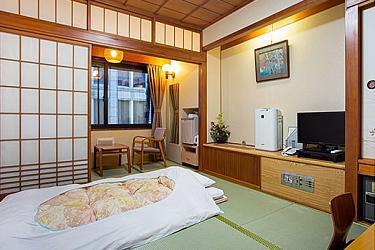
Experiences around Osaka
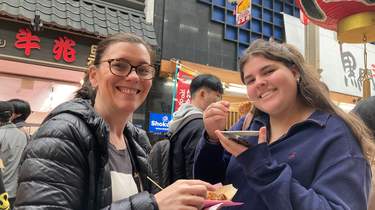
- Tokyo Cheapo (繁體中文)
Tokyo to Osaka: Fast and Creative Ways of Getting There
Whether you’re heading from Tokyo to Osaka with plans to chow down , check out Universal Studios Japan , or any of the other super fun things you can do in Osaka, we’ve compiled the fastest and cheapest ways to get there.
How to get from Tokyo to Osaka
Osaka: cheaper, dirtier, and a whole lot friendlier than Tokyo. A vibey city of 2.5 million, it’s bigger than neighboring Kyoto and also more down to earth. It’s also famous for its local food culture. But most importantly, how are you getting there?
Osaka is about 400 km west of Tokyo as the crow flies. By rail or road, the journey is more like 515 km, however. Coming from Tokyo by bullet train, you’ll stop at Kyoto Station before arriving at Shin-Osaka.
Best choice: Shinkansen
The fastest, easiest, and most convenient option is the Shinkansen, especially if you have a Japan Rail Pass or are looking to arrive quick-fast. The cheapest option is usually a highway bus, followed by flights — but these are both a bit time-consuming.

Comparing Tokyo to Osaka travel options
Here’s a quick comparison of the different types of transport.
Carbon emissions
A great thing about the Shinkansen is that it has the lowest emissions per passenger, out of all of the modes of transport (apart from walking or cycling). According to JR and our own calculations, taking the Shinkansen from Tokyo to Osaka — about 4.65KG CO 2 per passenger — is about 1/12 of the carbon emissions of flying.
Being a form of mass transit, highway buses are also among the more energy-efficient options for traveling long distances in Japan. We estimate the Tokyo to Osaka journey by coach will create CO 2 emissions of around 15kg per passenger.
How long does it take to get from Tokyo to Osaka?
Taking the shinkansen (bullet train) from tokyo to osaka.
From ¥ 13,870 2 hours and 22 minutes (fastest service) Buy a one-way ticket on Klook or Rakuten Travel Experiences , or a JR Pass in advance
The journey from Tokyo to Osaka on the bullet train takes 2.5 to 3 hours . The route, which is part of the Tōkaidō Shinkansen line , is popular, served by multiple Shinkansen every hour.
Important: The Shinkansen arrives at Shin-Osaka Station, which is not the same as Osaka Station. The JR Tōkaidō Main Line connects the two stations in 4 minutes; the JR Kyoto, JR Kōbe, and JR Takarazuka line trains all run on this route. The ¥ 170 fare is covered by the bullet train ticket. Unlike Osaka Station, Shin-Osaka Station is relatively easy to navigate and the transfer is a only a short walk.

Tōkaidō Shinkansen services to Shin-Osaka
The fastest service, Nozomi, will get you from Tokyo Station to Shin-Osaka Station in just 2 hours and 22 minutes. Taking the Hikari will add an extra 40 minutes or so to your travel time. The sluggish Kodama, the oldest in the fleet, takes closer to 4 hours, and is generally avoided except by last-minute riders and super discount-seekers.
Note: If you’re traveling during off-peak season, you can knock ¥ 200 off the reserved seat price. During peak season it’s an extra ¥ 200 (and an extra ¥ 400 during super-peak season). For more information on seasonal price fluctuations, see our breakdown of how Shinkansen fares are calculated .
Departing Tokyo for Osaka
Shinkansen services for Osaka depart from Tokyo Station , Shinagawa Station, and Shin-Yokohama Station. Osaka’s Shinkansen station is called Shin-Osaka Station, so that’s where you’ll want to get off.
Shinkansen tickets from Tokyo or Shinagawa Station to Shin-Osaka Station cost the same, but tickets from Shin-Yokohama Station are a little cheaper. Besides these stations, the Tōkaidō Shinkansen also stops at Nagoya Station and Kyoto Station , before arriving at Shin-Osaka Station. Hikari and Kodama Shinkansen services stop at more stations.
Arriving at Shin-Osaka Station
When you arrive at Shin-Osaka Station, it’s important to know that it’s not the main train station in Osaka City. Shin-Osaka Station was built a little out of the city center, specifically to service Shinkansen. From here, you can easily get a range of limited express trains, local trains, and subway lines to other destinations including central Osaka, Kansai International Airport , Kyoto , and Nara .
How often does the Shinkansen run to Osaka from Tokyo?
There is a Nozomi Shinkansen heading from Tokyo to Osaka every 10 minutes or so between 6 a.m. and 11 p.m. Add in Hikari and Kodama services, and you’re spoilt for choice.
Seat reservations on the Shinkansen to Osaka
Despite the frequency of the Shinkansen services, we like to err on the side of caution and recommend forking out a few hundred yen extra to get a reserved seat. This goes double if you’re traveling during holidays or peak periods, with kids, lots of luggage, or in a group. If you opt for a non-reserved seat, just know that you could end up standing the whole way to Osaka.
See our full guide to riding the Shinkansen for more information on how to reserve seats.
Buying Tokyo to Osaka Shinkansen tickets
You can buy Shinkansen tickets in person at a ticket vending machine or ticket office at most major JR stations. It’s also possible to buy them online via Klook, just note that there’s an extra fulfilment fee.
Another option is the discounted Shinkansen and Osaka 1-day pass combo ticket, available on JTB . The regular price is ¥ 13,870 for the Shinkansen ticket, plus ¥ 820 for the Osaka transport pass. JTB knocks off ¥ 490 .
For more information, see our article on how to buy Shinkansen tickets .
Luggage rules on the Tōkaidō Shinkansen
If you have a lot of luggage, or even one huge bag, consider sending it on ahead with a luggage delivery service. New Shinkansen luggage rules dictate that luggage with dimensions of over 160cm but under 250cm will require special reservations.
This is not at any extra cost; however, space for luggage is limited. And if you are reserving a spot for your luggage, you also have to reserve a seat for yourself (meaning you can’t go for the cheaper unreserved seats). Bags over 250cm won’t be allowed onboard the bullet train at all.
What rail passes cover the Shinkansen from Tokyo to Osaka?
If you’re visiting Japan and this is not going to be your only domestic trip, an All Japan Rail Pass (JR Pass) may work out to be an economical option. However, with prices starting at ¥ 50,000 for a 7-day pass, we recommend planning your trip carefully to make sure you make the most of it. Also, keep in mind that the All Japan Rail Pass doesn’t cover travel on Nozomi trains — there is an extra fee of ¥ 4,960 .
Alternatively, you may want to consider the Hokuriku Arch Pass . It can also get you from Tokyo to Osaka, just along a more scenic route. At the time of publication, the price was ¥ 24,500 , though this will go up to ¥ 30,000 from March 16, 2024.
How to save money with discount tickets and packages

Flights from Tokyo to Osaka
From ¥ 5,000 (one-way) + travel cost to/from the airport 90 minutes (flight time) + travel time to/from the airport Narita Airport or Haneda Airport to Kansai International Airport (KIX)
Taking to the sky is also an option, but it’s not always the most convenient way to travel between Tokyo and Osaka. A one-way ticket can go for as low as ¥ 5,000 or up to ¥ 12,000 on a low-cost carrier like Peach or Jetstar.
But you’ll need to factor in other expenses, like getting to/from the airports. This could easily add ¥ 1,000 or more one-way to your trip. And, don’t forget the time required to travel between the city centers and the airports.
Sample flight costs from Tokyo to Osaka

Getting from KIX to Osaka
Once you land at Kansai Airport, you’ll have to board a train or bus to Osaka .
The JR Haruka Ltd. Express service connects Kansai Airport and JR Osaka Station in just under an hour. The ride costs in the region of ¥ 2,740 one way. However, discounted tickets can be purchased online (foreign passport holders only) for as little as ¥ 1,600 .
What about Haneda Airport? And Osaka Itami Airport?
There are also direct flights between Tokyo’s Haneda Airport and Osaka Itami Airport. Both of these airports are closer to their respective city centers than Narita and KIX.
However, low-cost carriers like Peach and Jetstar do not fly this route. The only airlines that do are the pricy legacy carriers, Japan Airlines (JAL) and All Nippon Airways (ANA). Both offer discounted plane tickets to foreign travelers — currently as low as ¥ 7,700 one-way on the Haneda to Itami route — but this is still usually more than LCC fares.
For JAL the Japan Explorer Pass is available for foreign visitors to Japan to book. ANA on the other hand has special Experience Japan Fares for domestic flights purchased outside of Japan.
Highway buses from Tokyo to Osaka
From ¥ 2,600 8 hours or more
Hopping on a highway bus will get you from Tokyo to Osaka in around 8 hours and set you back between ¥ 2,600 – ¥ 10,200 one way , depending on what level of comfort you’re after. There are night buses and day buses, with the former departing around midnight and rolling into Osaka at the crack of dawn.
There are various bus companies, but look on Headout , as well as Willer Express and Kosoku Bus , for reasonably priced bus tickets. It’s pretty standard to find a night bus for ¥ 3,500 – ¥ 5,000 or less one way.

The buses leave from major stations in Tokyo. Most buses have toilets; some don’t, but they all stop regularly for loo and smoke breaks.
Regular trains
¥ 8,910 9 hours or more
Travelers who are happy going nowhere slowly might want to consider the ultra-cheap Seishun 18 Pass . For ¥ 12,050 , you’ll get 5 (non-consecutive is fine) days of travel on any and all local JR trains, as well as rapid JR trains that don’t require seat reservations. That’s ¥ 2,410 per day of travel.
This means you can, technically anyway, get to Osaka and back for ¥ 4,820 (with 3 days of travel left on your ticket). It’s not the most efficient way of doing things but certainly an adventure!

You can also share the tickets with friends — for example, one set of the five tickets could get five of you down to Osaka (that would use them all up). The snag? You’re looking at at least 9 hours of total travel time, with at least seven transfers. You can use the rail route planning site Jorudan (Japanese and English) to plot your trip.
Another catch is that the Seishun 18 Pass is available only three times a year (coinciding with university holidays). If you were keen on using regular trains to get from Tokyo to Osaka without the Seishun 18 Pass, think twice: the cost of the trip is around ¥ 9,000 one way, making pretty much every other option more economical.
Driving from Tokyo to Osaka
Around ¥ 11,000 in tolls alone 5 hours and 30 minutes or more
You can also rent a car and drive from Tokyo to Osaka, but the highway tolls and speed limits make this a less-than-fun journey. The drive takes about 5 or 6 hours and costs about ¥ 11,000 in tolls (ETC fare) alone. You’ll also be burning through a tank of fuel. And then you’ve got a car in Osaka, where driving and parking are a pain.
If you’ve got weeks at your disposal and a good pair of walking shoes, you could hoof it hobo style (although to be honest, we wouldn’t). You could also put pedal to the metal and roll that mamachari across the country. Or you could travel with a sense of class and ride that discount unicorn you found at Donki …
Video guide to travel between Tokyo and Osaka
Going the other way: Traveling from Osaka to Tokyo
If you’re heading east to the capital of Japan, your transport options are pretty much identical, with the exception of some of the discount deals. We have a dedicated guide to the Osaka to Tokyo route .
Tokyo to Osaka travel FAQs
We answer some of the most common questions.
When is the best time to book travel between Tokyo and Osaka?
Osaka is an evergreen destination, though the usual peak travel season cautions apply. Travel in Japan is always more hectic, crowded, and expensive during peak periods, which include: year-end/New Year’s, cherry blossom season (late March to early April), Golden Week , summer break (late July through August). You’ll want to book your tickets at least a month in advance.
Shinkansen tickets fluctuate only slightly — a few hundred yen — but flights and buses, with dynamic pricing, can cost as much as twice the price of an off-peak ticket. There are no blackout dates on the discount fares for international tourists offered by JAL and ANA, though flights may very well sell out during busy periods.
Generally speaking, weekdays are better than weekends (though beware of getting on city trains during rush hour with luggage).
Is it possible to do a day trip to Osaka from Tokyo?
Yes, it is. The Shinkansen starts running around 6 a.m. and the last return train from Shin-Osaka to Tokyo is around 9 p.m. This gives you a whole day in Osaka — but does mean missing out on Osaka’s famous nightlife.
A night bus gives you slightly more time, but even an 11 p.m. return bus still requires a relative early night (by Osaka standards).
Osaka is much more doable as a day trip from Kyoto , which is only a 30-minute train ride away.
While we do our best to ensure it’s correct, information is subject to change. This post was first published in January, 2016. Last updated on March 4, 2024, by Carey Finn.
閱讀中文版本: 東京到大阪交通指南:快速到埗和別具創意的各種方式
- Domestic airlines
- Highway bus
- Low-cost carriers
- Sustainability
- Weekend-getaway
Get our Tokyo Cheapo Hacks direct to your inbox

Renting a Pocket Wifi Router in Japan: The Best Options

Tokyo Sumo Guide: When and Where to Experience Sumo Wrestling

Top Japanese Phrases You Need Before Traveling to Japan

Tokyo Disneyland: Everything to Know Before Visiting

A Guide to ALL Pokemon Centers in Tokyo, Japan

24 Hours in Tokyo — The Ultimate Itinerary Guide

Tokyo's Best Airport: Flying into Narita vs. Haneda

Complete Guide to the Tōkaidō Shinkansen
Everything you need to know about Japan's most popular bullet train.

English-Speaking Hospitals in Tokyo — And How To Visit Them
Absolutely everything you need to know about seeing a doctor in Japan.

Yozakura: 8 Best Nighttime Cherry Blossom Illuminations in Tokyo
Light-ups have been extended, since the blossoms were so late this year.

New Video: Tokyo's Best Airport — Flying into Narita vs. Haneda
Which one should you use when flying to Tokyo?

The Hokuriku Arch Pass: Taking the Slow Route Between Tokyo and Osaka
Meander along Japan's "golden route" — exploring Nagano, Kanazawa and more.

Spring Escapes: Top 7 Day Trips from Tokyo
Must-see cherry blossom, moss phlox, and wisteria locations — all easily accessible from Tokyo.

Ashi Angels: Hakone for Evangelion Fans
Explore the real Tokyo-3.
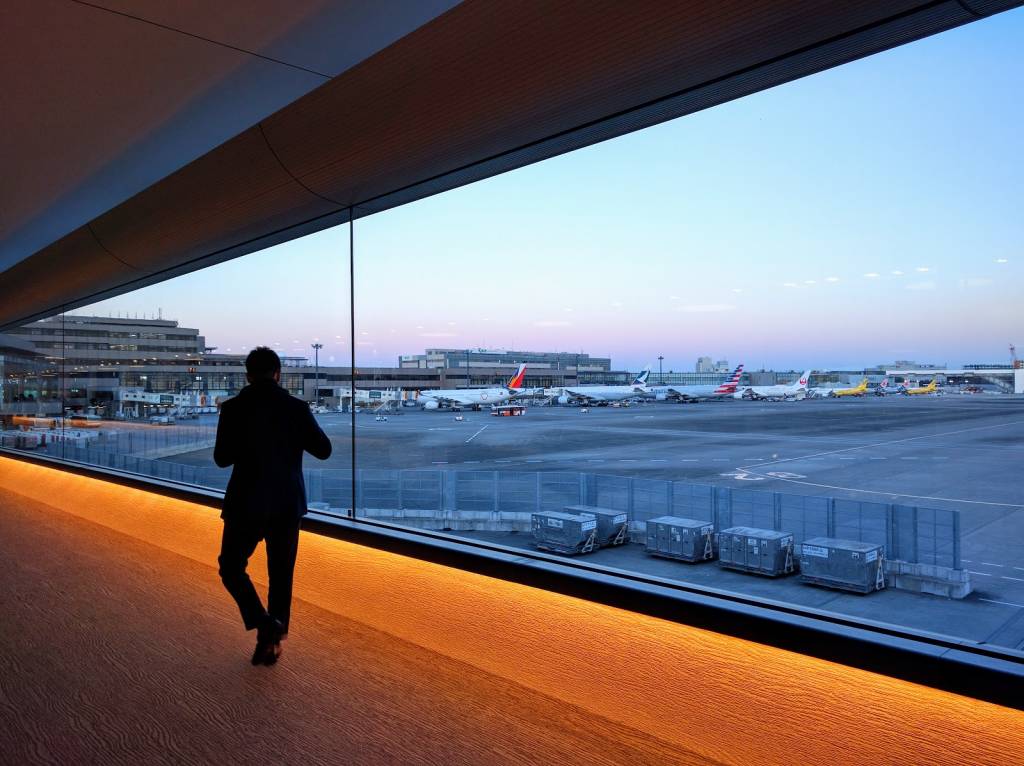
Finding the Best Transport From Narita Airport to Tokyo
How to get from the plane to your accommodation.

New Video: Top Japanese Phrases You Need Before Traveling to Japan

5 Stunning Spring Bus Tours From Tokyo
Take a ride to experience the best of the season.

Top 25 Easy Day Trips From Tokyo
Add a few of these to the wander list.

New Video! Suica Card in 2024: How and Where to Buy
We cover where and how to purchase Suica cards, digital Suica, Welcome Suica, and Pasmo Passport.

Close without accepting
Tokyo to Osaka Train
Explore the most current information on trains from Tokyo to Osaka
Tokyo to Osaka Trains Information
Travel Time
Approximate
Ticket Cost:
Tokyo to Osaka Trains Schedule
Did you know that the very first high-speed line in Japan was the Tokaido Shinkansen, connecting the country's capital with the charming city of Osaka? When the line entered the service in 1964, a bullet train from Tokyo to Osaka was something of a miracle. Now, over 50 years later, Shinkansen trains are still the pride of the Japanese railway . Fast and safe, they offer amazing onboard amenities and several travel classes to choose from. It takes about 2.5 hours to reach Osaka from Tokyo, making the city a great day trip destination.
Keep in mind that the tickets get sold out very fast, so it's smart to book them in advance (the Rail Ninja platform is at your service, offering even more information about the route as well as to buy Shinkansen train tickets in a matter of a few mouse clicks).
Tokyo to Osaka Train Map
Take a train from Tokyo to Osaka for a breathtaking experience. Therefore, if you wish to experience a marvelous train ride with captivating landscapes, book this route. Moreover, you can check the train map. Start your journey now!
Book Japanese Train Tickets
Q&a: travel from tokyo to osaka.
CAN I USE JR PASS TO TRAVEL FROM TOKYO TO OSAKA?
HOW DO I GET FROM TOKYO TO OSAKA BY A BULLET TRAIN?
HOW MUCH IS A SHINKANSEN FROM TOKYO TO OSAKA?
The Tokaido line is served by several types of trains, so the price of a ticket depends on what train and travel class are you going to travel by, how far in advance do you buy your ticket, and so on (you can read more about the Japanese train tickets here ). On average, a high-speed Tokyo to Osaka train costs about 165 USD.
Explore More of Japan
Osaka to tokyo train, tokyo to nagoya train, tokyo to kyoto train, kyoto to osaka train.
Português
A Comprehensive Guide to Traveling from Tokyo to Osaka: Comparing Shinkansen, Highway Bus, and Air Travel
NAVITIME TRAVEL EDITOR
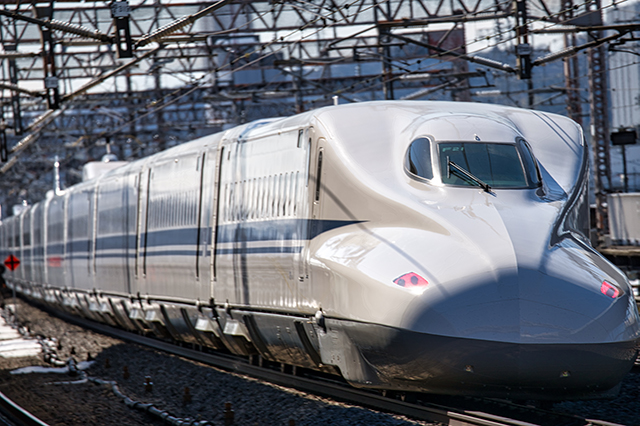
On any Japanese sojourn, Tokyo and Osaka are two of the most favoured destinations. For getting between these two cities, you have a trio of transport options available: the famed Shinkansen, highway bus, or airplane. Whilst the bullet train generally reigns supreme in terms of ease and popularity, the bus and plane are good alternatives, depending on budget and itinerary constraints. This concise guide aims to illuminate the pros and cons of each, delving into cost, travel duration, and more.
Option 1: Shinkansen
Also known as 'bullet trains’, Shinkansen travel between Tokyo and Osaka, with the particular line in question being the Tokaido Sanyo Line. This line offers a choice of three Shinkansen services: Nozomi, Hikari and Kodama. Of these, Nozomi outstrips its competitors in terms of speed, delivering you from Tokyo to Osaka in just two hours and 40 minutes. Whilst marginally slower, Hikari manages the journey in a respectable three hours and 10 minutes. Kodama takes a more leisurely approach and stops at all stations, resulting in a travel time of approximately four hours and 10 minutes. Despite their differences, the cost for these expeditions remains relatively similar and fluctuates between 14,030 yen and 19,040 yen, depending on your chosen seat and the weight of your luggage. Admittedly, it may seem a tad on the costly side, but the Shinkansen's reputation for punctuality, efficiency and dependability create a strong argument for this mode of transport. Famed for their adherence to timetables, Shinkansen trains are largely immune to delays, save for those rare instances of severe weather disruptions. On board, one enjoys a comfortable ride with minimal vibrations, not to mention the commendable legroom offered by the seats. With departures every three minutes or so, the ease of scheduling your travel itinerary is another compelling reason to choose the Shinkansen. Each carriage is fitted with accessible lavatories, complete with baby changing facilities. A charging port is available at every seat and the overhead storage can accommodate large luggage pieces. Refreshments are readily available on the Nozomi and Hikari trains, with snack carts providing a range of traditional snacks and local lunchboxes to satiate your hunger during the journey.
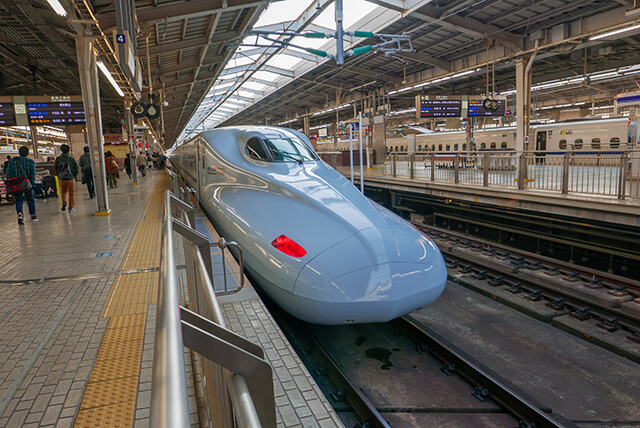
accessible lavatories, complete with baby changing facilities.
The Shinkansen offers a variety of seating options to cater to your needs: non-reserved, reserved, and the luxurious ‘Green car’ option. The latter is akin to business class on an airplane and offers more spacious seating. The standard cars are arranged in a 3 + 2 formation while the green cars offer more room to move with a 2 + 2 seating arrangement. Reserved seats are slightly more costly than non-reserved, although Japan Rail Pass holders can secure a seat without additional charge. Non-reserved seats operate on a first-come, first-served basis, offering a more spontaneous option for those without a rigid schedule. For the assurance of knowing your seat is secure (especially when travelling as part of a group), reserving a seat is advisable. This is particularly prudent during peak times, such as Golden Week (late April to early May), the Obon festival (mid-August), and New Year holidays (late December to early January).
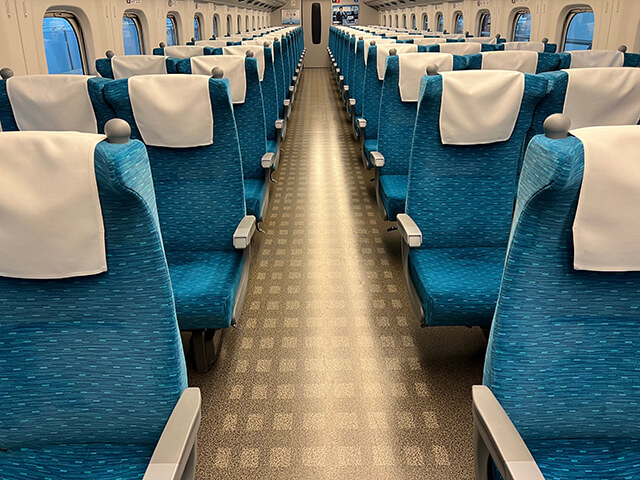
The standard cars
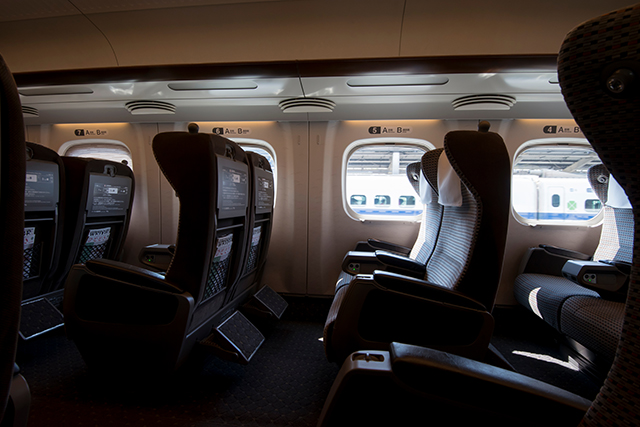
The green cars
How to buy tickets
Tickets for Shinkansen trains can be purchased at Japan Rail stations, either from 'Midori no Madoguchi' counters or ticket machines. Information such as the number of passengers, travel date and time, departure and arrival stations, and seating preferences (Green or Ordinary, reserved or non-reserved) will be required. It’s preferable to secure your Shinkansen tickets ahead of time via the official Tokaido Sanyo Shinkansen SmartEX website. Creating an account is necessary but once you do, you can make reservations up to one month in advance. Paper tickets can then be collected from any Shinkansen ticket machine, facilitated by a QR code that is issued upon completing your reservation. Your SmartEX password will also be required. Shinkansen tickets can also be reserved in advance through Japan Travel by NAVITIME. After making a reservation, a QR code will be issued, which can be exchanged for a ticket by holding the QR code over the ticket vending machine at the station. Reservations can be made here: https://japantravel.navitime.com/en/booking/jr/search/?departure=00006668&arrival=00004305 Translated with DeepL.com (free version) Suica or Pasmo (rechargeable transport cards) can be a convenient tool when traveling in Japan and are technically usable for Shinkansen travel. However, the initial set-up is rather convoluted, so if you're merely visiting the country, opting for paper Shinkansen tickets is a simpler choice. Top tip for seat selection: For the best views of Mount Fuji on the Tokaido Sanyo Line, select a seat on the right-hand side of the train (F or D in Green Cars). This iconic natural landmark is best appreciated as the Shinkansen sweeps past Shin-Fuji Station in Shizuoka.

Midori no Madoguchi
How to get to the Shinkansen platform
To board the Shinkansen, you must first access the Yaesu side of Tokyo Station, which is essentially split from the Marunouchi section. There are multiple entrances available for accessing the Shinkansen platform: Yaesu North, Yaesu Central, Yaesu South, and Nihonbashi. Keep your paper ticket(s) handy as you approach the Shinkansen ticket barriers. In most cases, you will be issued two tickets - a passenger ticket and an express ticket. Certain trains may only require a single ticket. Either way, insert your tickets into the machine and remember to retrieve them as they emerge on the other side. If you have two tickets, they can be inserted together. In Osaka, the Shinkansen stops exclusively at Shin-Osaka Station, not Osaka Station. To reach Osaka Station, you’ll need to take the JR Kyoto, JR Kobe, or JR Takarazuka lines - a swift, four-minute journey that is covered by your Shinkansen ticket (hence the importance of retrieving your tickets at the Shin-Osaka Shinkansen gate). Shin-Osaka Station is set across four levels, with the Shinkansen arriving on the fourth floor. After alighting, descend to the third floor and look for signs marked “Transfer to JR Lines”.
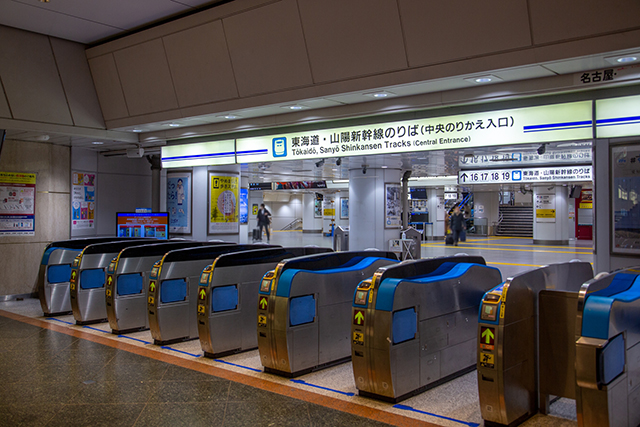
Shinkansen ticket barriers

Boarding tips
For a seamless boarding experience on the Shinkansen, be sure to inspect your tickets beforehand as they detail your departure time, train name, carriage number, and seat number. Electronic signboards found throughout the station provide timely updates on impending trains. After reaching the correct platform, locate the electronic display to identify the position of your carriage and look for the lane markings on the platform that dictate where you should wait. An effortlessly streamlined process, tailored for your convenience!

the electronic display
First and last trains
One of the Shinkansen's many benefits is its early and late departures. The first train pulls out of Tokyo Station at 6:00 am, rolling into Shin-Osaka Station by 8:22 am. For night owls, the last service departs Tokyo at 9:24 pm, reaching Shin-Osaka Station at 11:45 pm.
Option 2: Highway bus
For those keeping a close eye on their budget, the highway bus proves to be a thrifty choice. Granted, it takes eight to ten hours to complete the journey from Tokyo to Osaka, but you can cleverly economise on overnight accommodation by selecting a night bus. Night buses usually depart from Shinjuku or Tokyo Station between 9 pm and midnight, and will have you at Osaka Station between 6 am and 9 am the next morning. Highway bus fares fluctuate depending on the season and the day of the week. But as of June 2023, you can find seats for a paltry 3,000 yen. Mind you, ticket prices can surge during the high season and on weekends, so it's prudent to steer clear of these periods. Of course, the cost of a highway bus will rise if you require additional personal space. Companies such as Willer Express offer extra legroom and single occupancy, shell-style seats, which might set you back 10,000 - 20,000 yen. Reservations should be made online, with seats allocated in advance. For the comfort and safety of female travellers, some companies provide women-only buses or sections. The latter ensures a woman will only be seated next to a man if they're part of the same travelling group. Many buses come equipped with lavatories and usually make pit stops en route for comfort breaks. If long journeys are not your forte, it's recommended that you capitalise on these intervals for a quick stretch, thus warding off any discomfort later on.

Highway bus
Option 3: Airplane
For those with an inclination for air travel, you can fly into Osaka from Tokyo. Flights from Haneda Airport to Osaka International Airport are available via carriers such as All Nippon Airways (ANA), Japan Airlines (JAL), or Star Flyer. Fares start from around 10,000 yen, with the flight duration approximately one to one and a half hours. Once you land, the journey to Osaka Station takes an hour by a combination of monorail and train or is just 30 minutes by limousine bus. Alternatively, Kansai International Airport can be accessed from Narita International Airport with low-cost carriers Jetstar or Peach. Fares start from around 4,000 yen, with flights taking one and a half hours. From Kansai to Osaka Station, you can expect a journey time of about one and a half hours by train or just one hour by limousine bus. Do bear in mind that the efficiency of air travel can be somewhat diminished when factoring in the time it takes to commute to and from airports and the necessity for early check-ins. Moreover, if your journey in Osaka commences with a train trip, the additional time and cost associated with airport transit may well tip the scales.

Peach Airplane
Click here for a summary article including this article
プライバシーポリシー ・ 利用規約 に同意の上、ボタンを押してください。
ログイン(無料)すると より便利に利用できます
Change password
Niigata's Murakami City: Enjoy Fun Events, Sightseeing, and Local Cuisine!
We use cookies to improve our contents. Check the detail and update your settings here .
We use cookies to improve our services.
For more details, please click here .

- Change setting
- Food & Drink
- Accommodation
- Things To Do
- All the categories
Transportation
- Weather & Seasons
- Long-Term Stay
- Travel Tips
- Event Tickets
- About MATCHA
- Company Profile
- Things To Do in Osaka
- Food & Drink in Osaka
- MATCHA Special Features
How to Travel to Osaka from Tokyo in 2024: Price Comparison

In order to reach Osaka from Tokyo you can take a bullet train, highway bus, airplane, train, or car. We compare travel times and fares, pros and cons, and offer discount ticket information. Find the option that best suits your travel plans!
From Tokyo to Osaka
Tokyo and Osaka ―each with their own international airport―are large cities that serve as a base for sightseeing in Japan. There are also many visitors who like to include both cities in their sightseeing itinerary.
Tokyo and Osaka are about 500 kilometers apart from each other . There are many ways to travel from one city to the other including shinkansen, airplane, highway bus, and car.
Getting straight to the point, we recommend the shinkansen for travelers who prioritize speed and comfort , and the highway bus for those who want to travel economically . However, there are other modes of transportation, each with their own unique and attractive characteristics.
Table of Contents
1. Tokyo to Osaka: Modes of Transportation, Travel Times, and Fares 2. Shinkansen: Fast and Convenient! 3. Airplane: Inexpensive Fares Are Also Possible! 4. Highway Bus: Ideal for Economical Travel! 5. Local Train: Get on and off Whenever You Want To! 6. Car: Get Around Easily After Arriving In Osaka! 7. Frequently Asked Questions
Tokyo to Osaka: Modes of Transportation, Travel Times, and Fares
The chart below compares modes of transportation based on travel time and fares when traveling between Osaka and Tokyo. Please find the transportation method that best suits your own travel purposes after learning about their advantages and disadvantages!
Book a hotel room in Osaka on Booking.com
Book the JR Pass for Whole Japan (7, 14, or 21 Days)
Bullet Train (Shinkansen): Fast and Convenient!

Please also see: Shinkansen: How to Buy Bullet Train Tickets Photo by Pixta
The most convenient way to go from Tokyo to Osaka is by bullet train , or shinkansen. It offers a smooth and comfortable ride and is characterized by its short travel time compared to other kinds of transportation. Plus you also get stunning views of Mt. Fuji !
When going to Osaka by bullet train, first you'll get on at Tokyo Station and then disembark at Shin Osaka Station . It's just one station from Shin Osaka Station to Osaka Station. Also, with a 15-minute subway ride, you can get to Namba Station and also Shinsaibashi Station which is near the sightseeing spot of Dotonbori .
Fares According to Type of Shinkansen
The Tokyo-Osaka route is connected by the Tokaido Shinkansen which offers three types of bullet trains: Nozomi, Hikari, and Kodama. Their respective station stops and travel times differ.
Nozomi is the fastest of the three and arrives at Shin Osaka Station in just two hours and 30 minutes. Hikari takes about three hours, and Kodama takes about four hours.
However, one-way fare from Tokyo to Osaka is the same for all three train types. For example, one-way reserved seating is 14,920 yen, unreserved seating is 13,870 yen, and Green Car seating is 19,590 yen (fares increase during peak season).
How to Travel Inexpensively on the Shinkansen
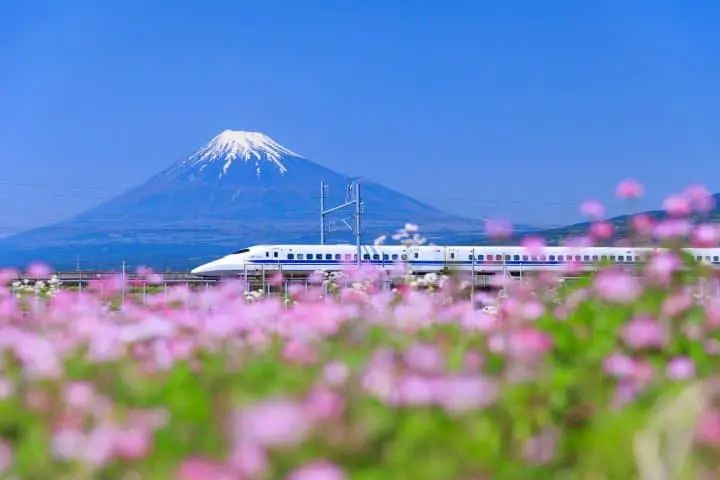
Please also see: Japan Rail Pass Guide - How And Where To Buy, Merits, And Tips
With Puratto Kodama (Japanese), a service offered by JR Tokai Tours, you can buy a reserved seat on a Kodama regular car for a reasonable 10,900 yen (fare increases during peak season).
But please note that the deadline for purchasing this ticket is 22:00 the day before you board the train. Also, it comes with various restrictions: changes to the ticket's day of use, the car and section, and the seat position, are not allowed.
On the other hand, for international visitors planning a trip to the city that doesn't include the Tokyo-Osaka route, we recommend the convenient and flexible Japan Rail Pass . If you plan to visit several cities and regions in Japan, the JR Pass can be very convenient.
For details on the Japan Rail Pass coverage and fares please refer to Klook or the related article down below.

Shinkansen: How to Buy Bullet Train Tickets

Japan Rail Pass (JR Pass): How to Buy and Use, Price, and Benefits
Airplane: inexpensive fares are occasionally available.

Travelers can also go from Tokyo to Osaka by airplane . In Tokyo there's Narita Airport and Haneda Airport, and in Osaka visitors can use either Kansai International Airport or Itami Airport. The travel time is about 90 minutes .
Main Service Routes and Airfare
The chart below lists the airline companies and their respective airfares as shown on the site Skyticket. As you can see, taking a low-cost carrier (LCC) such as Peach and Jetstar departing from Narita Airport and landing at Kansai International Airport, can be cheaper than taking the shinkansen.
Travel Times to Central Osaka from Kansai Airport and Itami Airport
From either Kansai International Airport or Itami Airport, it takes about one hour to the heart of Osaka by train . With Tokyo as well, it takes roughly one hour by train from Narita Airport to central Tokyo.
Additionally, time is also required for boarding procedures, luggage check-in, and luggage retrieval at the destination point. If you only consider the airplane's travel time, then it's faster than the shinkansen. But unfortunately, this can't be said when you also include the time spent at the airport.
When considering the advantages of air travel, however, one can say that taking a low-cost carrier from Narita Airport to Kansai International Airport would be cheaper than the shinkansen.
Click here to buy a Tokyo to Osaka air ticket on: skyticket
Highway Bus: Ideal for Economical Travel!

Photo by Pixta
We recommend the highway bus for people who'd like to travel economically regardless of the time required. In general, the price ranges from about 6,000 to 10,000 yen, but there are instances where it only costs 2,000 to 4,000 yen depending on time of the year and the bus company.
Travel time is 8 to 10 hours, but if you take the overnight bus you can sleep on the way to your destination. This is a great way to maximize your available sightseeing time.
The Tokyo-Osaka highway bus has several departure and arrival points. In Tokyo's case many buses depart from Tokyo Station's Yaesu exit and the Kajibashi Parking Lot.
With Osaka there are many different arrival points. In addition to Osaka Station's JR Highway Bus Terminal, buses also arrive at Umeda Station, Namba Station and other destination points.
All these points are within the heart of Osaka, but if you'd like to arrive at your desired destination even faster, then we recommend researching to find out which arrival point is best for you.
Get information on seats and fares for buses going from Tokyo to Osaka: Highway Bus WILLER

Budget-Friendly Travel! Overnight Bus For Saving Time And Money
Local Train: Get on and off Whenever You Want To!

People who want to take their time and enjoy their travels also have the option of taking a local train. A Tokyo-Osaka local train costs 8,910 yen and takes 9 hours to arrive.
Those who don't want to go to Osaka directly but would rather stop along the way and explore regional cities, buying a Seishun 18 Kippu Ticket is a good idea. This handy ticket costs 12,050 yen (adults and children pay the same fare).
With non-reserved seating in ordinary cars of JR local and rapid trains throughout Japan , passengers are allowed to embark and disembark the train freely. When riding limited express trains an extra charge applies.
However, you need to keep in mind that the ticket sales period and period of use are restricted to just three times a year: spring, summer, and winter .
On the way between Tokyo and Osaka you can stop in and visit sightseeing destinations such as Hakone and Nagoya . We recommend this for those who want to relax and enjoy the scenery from the train and those who'd like to travel freely with no set itinerary.

Ride And Save - How To Buy And Use Seishun 18 Kippu Tickets
Rental Car: Get Around Easily After Arriving in Osaka!

Going from Tokyo to Osaka by car via expressway takes six to seven hours. The one-way highway toll is about 8,000 to 14,000 yen. You will also need to add in gasoline charges.
Considering the cost and time and also the fatigue factor, it's difficult to say that traveling by car is a good option. But actually it does offer a convenient point. When you arrive in Osaka it'll be easy to get around.
Rentin a Car Is Convenient for Touring the Kansai Area
The Kansai Region, which includes Osaka, has many attractive sightseeing areas including Kyoto and Nara as well as Hyogo Prefecture's Arima Hot Springs .
While it is possible to access these places using public transport, a car is more convenient for people who'd like to travel efficiently and also stop into a shop or cafe along the way.
In Osaka there are many car rental agencies. Coming directly to Osaka from Tokyo by car is one option, but we also recommend renting a car when you arrive in Osaka.
MATCHA is currently offering international visitors a NIPPON Rent-A-Car 10% OFF Coupon . Please take advantage of this great offer!
Click here for a NIPPON Rent-A-Car 10% OFF Coupon!

Coupon Included! How to Rent a Car in Japan: A Guide for International Visitors
Frequently Asked Questions
Q1. are there times when shinkansen, airplane, and highway bus tickets are cheaper likewise, when do price increases occur.
A. Low-Cost Carriers (LCC) such as Jetstar and Peach occasionally offer sales. For details please refer to their respective homepages.
However, during peak periods, ticket prices for the shinkansen, airplane, and highway bus all increase, and there are also instances when tickets get completely sold out. This includes Golden Week (about April 27-May 6), Obon (about August 10-19), and from about December 28-January 6 at the end of the year and into the new year.
Also, when traveling by car during these times of the year the expressways can become congested.
So when traveling during these periods it's a good idea to make your reservations early and check traffic conditions ahead of time.
Q2. Are there any differences between going from Osaka to Tokyo and going from Tokyo to Osaka?
A. No, they are fundamentally the same.
Q3. When touring the Osaka area are there any bargain passes?
A. The experience reservation site Klook sells the Osaka Amazing Pass . This pass is for international visitors and is a set that combines unlimited rides on the subway with admission tickets for major sightseeing spots.
Q4. Can One buy tickets for Osaka sightseeing spots ahead of time?
A. On the experience reservation site Klook you can buy tickets ahead of time for popular sightseeing spots such as Universal Studios Japan (USJ) and Tsutenkaku .
If you decide to buy a same-day ticket at one of Osaka's popular sightseeing spots you might be greeted by a long lineup. So it's better to pick up tickets before going to your destination.
Find the Mode of Transportation That Suits You Best!
So please find the method of transportation that best suits your itinerary, budget, and travel style, then fully enjoy your Tokyo and Osaka adventure!
Book a hotel room in Osaka on Rakuten Travel Book a hotel room in Osaka on Booking.com Book a hotel room in Osaka on Agoda Buy a bargain ticket on the highway bus-overnight bus!

Umeda / Shinsaibashi / Namba

*This article is a revised edition of an article that was originally published on December 3, 2015.
The MATCHA editorial department. Our articles feature useful travel information for visitors to Japan, from how-to guides to recommended places to visit.
Related topics
Top articles.

Explore Osaka's Lively Downtown! Top 10 Spots To Visit In Namba

Shinsaibashi Shopping Guide: Fashion, Cosmetics, and Local Dishes in Osaka

Osaka: 15 Must-See Spots, Both Famous and Little Known
Related article.

How to Travel to Hiroshima From Tokyo: A Thorough Comparison

Osaka: 52 Things to Do and Places to Visit

How To Travel From Osaka To Miyajima

Accessing Atami, A Hot Spring And Resort Day Trip From Tokyo
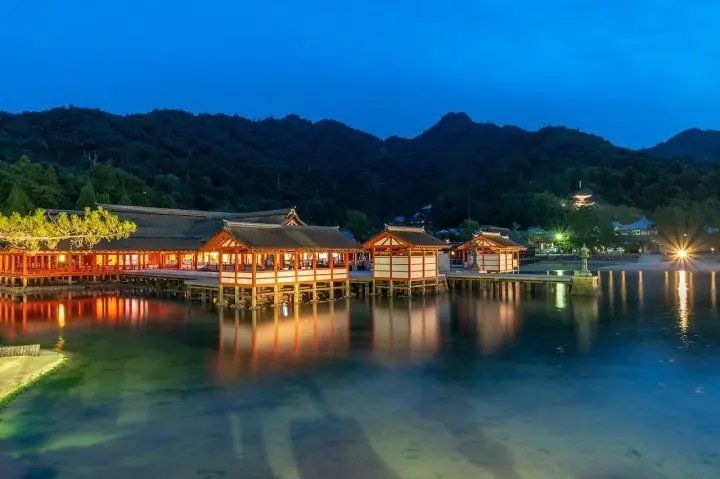
Shinkansen or Bus? How to Travel From Osaka to Hiroshima
Start planning your trip
Special Features

Popular Searches
Latest news.

Showa Kinen Park Flower Festival 2024: Enjoy Nemophila, Tulips, and More!

A Must for Nature Lovers! Win a Free Stay at Unzen Amakusa National Park

A World of Light and Color! Van Gogh Alive in Japan 2024

Cherry Blossom Light-up in Tokyo! Yomiuri Land's Jewellumination

Cherry Blossoms and Sky Lanterns! Aichi Hanami Lights 2024

Japan's Public Holidays and Long Weekends in 2024

Aeon Mall Okinawa Rycom: A Shopping Mall Featuring a Resort Aura

Suica and Pasmo IC Cards: Prepaid Transportation Passes in Japan

Riding Taxis in Japan: The 6 Best Apps to Grab a Cab

How to Travel to Kyoto From Osaka: The Fastest and Cheapest Ways
New articles.

[2024 Renewal] A hotel worthy of being the base for a trip to experience the World Natural Heritage site "Yanbaru"

Depart from Fukuoka Airport! A two-day, one-night trip where you can experience making mizuhiki

[About Bouton/Bokakuan, located in a corner of the shopping district] Bokakuan Edition

Munakata City, Fukuoka Prefecture. The God-protected island of Oshima and Akamajuku on the old Karatsu Highway will host the "Resonating Art Munakata" event from March 9th to 24th, 2024!
TOKYO TO OSAKA TRAIN
Tokyo to osaka bullet train facts, tokyo to osaka shinkansen.
Considered to be among the fastest trains in the world, Nozomi offer an amazing Tokyo to Osaka bullet train travel experience. In addition, the train stations are located near the city centers which makes them conveniently accessible by public transport.
All Tokyo to Osaka Shinkansen bullet trains running between the cities boast several travel classes , fast travel times (Tokyo to Osaka train time is about 2.5 hours), and an extensive and convenient schedule with up to 32 daily departures.

Book Train Tickets from Tokyo to Osaka
What to know about tokyo - osaka shinkansen.
Inside Osaka
Your Osaka Travel Guide
Osaka-Kyoto-Tokyo 10-Day Itinerary
Ten days is the perfect amount of time to spend in Japan. Here’s a great Tokyo/Kyoto/Osaka itinerary that will allow you to see the best places efficiently and easily.

Osaka and Kyoto 1-Week Itinerary Summary
- A good breakdown is 2 days in Tokyo, 4 in Kyoto, and 2 in Osaka, plus two travel days.
- You’ll probably fly via Tokyo (NRT or HND airports) but it’s also possible to do this via Kansai (KIX), with some minor reorganization.
- A 1-week Japan Rail Pass will save you money on this itinerary, especially if you use it correctly. You can buy your Japan Rail Pass online .
Check Osaka Hotel Availability
Destination, check-in date, check-out date.

Full Itinerary
- The biggest decision you must make is which city to visit first: Osaka or Kyoto? Here, we’ll suggest visiting Osaka first, but you could easily switch them around.
- Note that the two Osaka days here are a summary version of our Osaka 2-Day Itinerary. Visit our Osaka 2-Day Itinerary page for full details on those two days.

Day 1: Arrive in Tokyo
- You’ll most likely fly into either Narita International Airport (NRT) or Haneda International Airport (HND). See our Tokyo Airport Transport page for full transport details.
Osaka Holiday Essentials
- Where To Stay In Osaka: See our guide to the best areas and the best hotels to stay in Osaka .
- Things To Do In Osaka: Check this overview of Osaka activities with links to all the key information.
- Flights To Osaka: Find the cheapest flights to Osaka and flight times from scores of airlines with Skyscanner .
- Osaka Packing List: Don’t forget to take any of the essentials with our comprehensive Packing List For Japan .
- Travel Insurance: World Nomads offers simple and flexible travel insurance. Claim online anywhere in the world.
Day 2: Tokyo: Modern Tokyo/West Side
- 8:30am: Travel to Harajuku, using the JR Yamanote Line to Harajuku Station or the Chiyoda subway line to Meiji-Jingumae/Harajuku Station.
- 9:00am: Arrive in Harajuku and visit Meiji-jingu Shrine. Explore the shrine and then return to Harajuku Station then walk east on Omotesando. Continue east all the way to the superb Nezu Museum and do not forget to explore the sublime garden.
- 11:00am: Walk back to the intersection of Omotesando and Aoyama-dori and take the Ginza subway line west to Shibuya.
- 11:15am: Arrive in Shibuya and exit the station via the Hachiko exit and then cross the famous Shibuya Crossing. Explore the big department stores and boutiques of Shibuya.
- 1:00pm: Eat lunch somewhere in Shibuya. Don't forget that all the department stores in Shibuya have huge restaurant floors.
- 2.30pm: Take the Yamanote Line one stop south from Shibuya to Ebisu Station, then switch to the Hibiya Line subway and take that two stops east to Roppongi.
- 3:00pm: Arrive in Roppongi and walk west from Roppongi Station to the Roppongi Hills complex. Refuel with a cup of coffee there. Then, head up to the 52nd floor Tokyo City View observation deck of the Mori Tower to see the city.
- 6:00pm: Eat dinner in Roppongi.
- 8:00pm: If you still have any energy left, have a drink in one of Roppongi's many bars.

Day 2: Tokyo: Traditional Tokyo/East Side
- 9:00am: Head up to Asakusa. The Ginza subway line is a good way to get there from many parts of Tokyo. Asakusa is the spiritual heart of Tokyo and a good place to start your day. Visit Senso-ji Temple and nearby Asakusa-jinja Shrine.
- 10:30am: Take the Ginza subway line three stops west to Ueno.
- 11:00am: Arrive in Ueno. Take the exit for Ueno-koen Park and walk north across the park to the superb Tokyo National Museum. After visiting the museum, walk south to Tosho-gu Shrine and then make your way back to the station. As on Day 1, try to avoid eating lunch between noon and 1pm. Have a snack or a coffee to get your through.
- 1:00pm: Take the JR Yamanote Line south to Tokyo Station. Eat lunch in or around Tokyo Station. See the Tokyo Station Area Places to Eat section for my recommendations.
- 2:00pm: Check with the tourist information office in the basement of the Kitte Building to see what's on at the Mitsubishi Ichigokan Museum or the Bridgestone Museum of Art. If neither look good, walk over to the Imperial Palace East Garden and take a stroll.
- 3:00pm: Walk over to Ginza and do some late afternoon shopping.
- 4:00pm: Return to your hotel for a nap and a shower.
- 6:00pm: Eat dinner in an area like Shinjuku, Ginza, Marunouchi or someplace close to your hotel. See the relevant district pages for recommendations.
- 8:00pm: If you've still got the energy, go out for a drink in a place like Roppongi, Shinjuku or Shibuya. See the relevant district pages for recommendations.

Day 3: Travel to Osaka
- Take the shinkansen from Tokyo to Osaka. If you’ve got a one-week Japan Rail Pass, this is the day to activate it. For details on the shinkansen trip between Tokyo and Osaka, see the How To Travel From Tokyo to Osaka page.
- Note that the trip between Tokyo and Osaka takes just a bit less than 3 hours, so you have time to do some sightseeing in Tokyo on this morning and some in Osaka this afternoon.
Day 4: Osaka: Osaka Bay Area and Kita District
- 9:30am: Travel to the Osaka Bay Area
- 10am: Visit Osaka Aquarium (Kaiyukan)
- 11:30: Eat Lunch at Tempozan Marketplace
- 1pm: Travel from Osaka Bay Area to the Kita District
- 1:30pm: Explore the Kita District
- 3pm: Travel to the Osaka Castle Area
- 3:30pm: Visit Osaka Castle
- 6pm: Dinner in Kita , Minami or Central Osaka
Day 5: Osaka: Minami District and Tennoji
- 9:30: Travel to Minami
- 10am: Explore Minami
- Noon: Dotombori Area and Lunch
- 1:30pm: Visit Hozenji Yokocho
- 2:30pm: Walk through Doguyasuji Arcade
- 3:30pm: Visit Den-Den Town
- 5:30pm: Eat dinner in Minami
- 7:30pm: Check out the evening views from the Abeno Harukas 300 observation decks in Tennoji

Day 6: Kyoto: Travel to Kyoto and Explore Southern Higashiyama and Downtown
- 9am: Travel from Osaka to Kyoto. If necessary, either drop your luggage at your hotel or put it in the lockers or luggage storage office at Kyoto Station.
- 10am: Visit Kiyomizu-dera Temple.
- 11am: Walk down Sannen-zaka and Ninen-zaka.
- Noon: Enter Shoren-in Temple and enjoy a cup of tea overlooking the garden.
- 1pm: Get on the Tozai Subway Line at Higashiyama Station and get off at Kyoto Shiyakushomae (downtown).
- 1:30pm: Eat lunch downtown and explore Nishiki Market and the food floor at nearby Daimaru Department Store.
- 3pm: Take the Keihan Line to Fushimi-Inari Station and walk to nearby Fushimi-Inari Taisha Shrine.
- Dusk: Return to your hotel and relax and freshen up. (For Kyoto hotel recommendations, see the Kyoto Hotels page).
- Evening: Eat dinner downtown, then walk over to Shimbashi in Gion and keep your eyes peeled for geisha.
Day 7: Kyoto: Arashiyama, Kinkaku-ji and Daitoku-ji
- 8:30am: Head west to Arashiyama.
- 9:00am: Enter Tenryu-ji Temple.
- 10:00am: Leave Tenryu-ji Temple by the north gate and explore the Bamboo Forest for about half an hour.
- 10:30am: Leave the Bamboo Forest and enter Okochi-Sanso Villa.
- 11:30am: Leave Okochi-Sanso Villa and return to central Arashiyama. Eat a simple lunch of noodles or rice in one of the shokudo (simple eateries) on the main strip.
- 12:30pm: Take a taxi over to Kinkaku-ji Temple, the famed “Golden Pavilion” in Northwest Kyoto.
- 1:00pm: Explore Kinkaku-ji Temple.
- 2:00pm: Take a taxi down to Daitoku-ji Temple and enjoy the peace and quiet of a small subtemple there. Consider Koto-in Temple.
- 3:00pm: Take the Karasuma Subway Line to Shijo Station and enjoy a bit of shopping or café life.
- 4:00pm: Take a rest at your hotel.
- 6:00pm: Eat dinner downtown and then take an evening stroll on Pontocho Alley or on Kiyamachi-dori south of Shijo-dori.
Day 8: Kyoto: Kurama/Kibune and Northern Higashiyama
- Morning: Take a day trip to Kurama and Kibune (ideally, hike over the mountain from Kurama to Kibune).
- Afternoon: Visit the Northern Higashiyama area: Ginkaku-ji Temple, Honen-in Temple, the Path of Philosophy and Nanzen-ji Temple.
Day 9: Travel Back to Tokyo
- Return to Tokyo by shinkansen. You’ll likely arrive back in Tokyo with some time to do some last-minute sightseeing and souvenir shopping.
Day 10: Depart From Tokyo
- You’ll most likely fly out of Narita International Airport (NRT) or Haneda International Airport (HND). See our Tokyo Airport Transport page for full transport details.
Special Ticket Deals
- A 1-week Japan Rail Pass will save you some money on this trip. See our Japan Rail Pass: Is It Worth It? page for details. You can buy the Japan Rail Pass online .
- You might also save some money with a special 1-day transport pass in Osaka. See our Osaka Trains and Subways page for details.
- It’s important to stay somewhere central and convenient in each city in order to save time and money on transport
- See our Where to Stay in Osaka page for details on where to stay in Osaka.
- See our Where to Stay in Kyoto page for details on where to stay in Kyoto.
- See our Tokyo Hotels page for details on where to a careful selection of the best hotels in Tokyo.
Where Are These Places Located?
- Open the Osaka map
- You will see the list of places on the left hand side. (Click the 3-line icon in the top left corner if not). Scroll down or use the map search (the magnifying glass icon) to find the place you want.
- Click the name of the place in the list. Its location pin will be highlighted on the map.
- Map pins are color coded - BLUE: Hotels / Ryokan / Guesthouses | VIOLET: Ryokan | PINK: Places to Eat | GREEN: Shops | YELLOW: Things to See and Do
- If you're using the map on your phone, open the map and then search for the name of the place. The map will then zoom in on its location.
Osaka Vacation Checklist
- For all the essentials in a brief overview, see my First Time In Osaka guide
- Check Osaka accommodation availability and pricing on Booking.com and Agoda.com - often you can book with no upfront payment and free cancellation
- Need tips on where to stay? See my one page guide Where To Stay In Osaka
- You can buy shinkansen (bullet train) tickets online from Klook - popular routes include Tokyo to Osaka , Osaka to Kyoto and Osaka to Tokyo
- You can buy a Japan SIM card online for collection on arrival at Osaka's Kansai International Airport. Or rent an unlimited data pocket wifi router
- Compare flight prices and timings to find the best Japan flight deals
- If you're visiting more than one city, you might save money with a Japan Rail Pass – see if it's worth it for you
- World Nomads offers simple and flexible travel insurance. Buy at home or while traveling and claim online from anywhere in the world
Osaka District Map

- Shin-Osaka Area
- Central Osaka Area
- Minami Area
- Tennoji Area
- Osaka Castle Area
- Osaka Bay Area
- Tokyo Cheapo (繁體中文)
Osaka to Tokyo: The Fastest and Cheapest Ways to Get There
Traveling from Osaka to Tokyo is quick and easy, as it’s one of the most popular routes in Japan.
The two cities are separated by a distance of approximately 500 km, which can be covered by bullet train, highway bus, or low-cost carrier — it all depends on how much time and money you have. Read on for a comprehensive breakdown of all your travel options.
Heading the other way? Check out our dedicated guide on how to get from Tokyo to Osaka .
The best ways to travel from Osaka to Tokyo
Top choice: shinkansen.
Hands down the fastest, easiest, and most convenient way of traveling between Osaka and Tokyo is the Shinkansen , which is the bullet train. However, this is also the most expensive option, unless you have a Japan Rail Pass and are putting it to good use.
Should I buy a JR Pass to get from Osaka to Tokyo?
If Osaka to Tokyo is your only trip, then a Japan Rail Pass (JR Pass) is not worth it. It would be cheaper to buy a point-to-point Shinkansen ticket (available on Klook and Rakuten Travel Experiences ). However, if you are planning to travel around more, e.g. Osaka to Tokyo, then on to Sendai and Aomori, before going back to Osaka, a JR Pass can save you cash. Learn more about the JR Pass .
Second best: Highway bus
Overnight buses are a popular choice, as they are economical and save on a night’s accommodation. Tickets start from ¥ 3,100 and you can book them on Kosoku Bus , in English. The only caveat is that they aren’t very comfortable, so you might arrive bleary-eyed and grumpy!
Note: Since Osaka is just a short train ride from Kyoto , the options for getting from Kyoto to Tokyo are largely the same.
Comparing Osaka to Tokyo travel options

Taking the Shinkansen from Osaka to Tokyo
From ¥ 13,870 2 hours and 22 minutes (fastest service) Buy a one-way ticket on Klook or Rakuten Travel Experiences , or a JR Pass in advance
The Shinkansen , or bullet train, is definitely the fastest and most convenient way of getting from Osaka to Tokyo, and it’s well worth experiencing a ride on one of the world’s top railways. While the Shinkansen is not always the cheapest option, if you are looking to reach Tokyo within a couple of hours, without the hassle of transfers, this is your best choice.
Note: The bullet train departs from Shin-Osaka Station, not Osaka Station, which is a couple of stops away.
How long does the Shinkansen take?
The ride from Osaka to Tokyo typically takes 2.5 to 3 hours, depending on which Shinkansen service you choose. The fastest option is the Nozomi, which is the one that takes 2 hours and 22 minutes. If you have a Japan Rail Pass , you’ll need to pay an extra ¥ 4,960 to ride the Nozomi. There is no extra charge to catch the Hikari, but it takes closer to 3 hours to make the journey.
The slowest service, the Kodama, will get you there in around 4 hours. Because the Kodama is rather sluggish, it’s best avoided. A Shinkansen departs Shin-Osaka Station roughly every 5–15 minutes, so you can leave whenever you’re ready.
Cost of taking the Shinkansen from Osaka to Tokyo
Buying a regular one-way ticket from Osaka to Tokyo will cost you ¥ 13,870 for a non-reserved seat. For a reserved seat, the cost is ¥ 14,200 – ¥ 15,120 , depending on the service (Nozomi or Hikari/Kodama) and the season (off-peak, peak, super-peak, etc.).
For more information on seasonal price fluctuations, see our breakdown of how Shinkansen fares are calculated . But the gist of it is that traveling is more expensive during times like Golden Week and New Year .
Should you reserve a seat on the Shinkansen?
To save some money, you can risk non-reserved seating, but you might end up with nowhere to sit and have to stand all the way — which can be uncomfortable. If you are traveling with children, don’t like standing for long periods of time, or have large bags, our advice is to go for a reserved seat . You can reserve your seats in advance at a JR ticket office, at any major JR station in Japan.
Remember: New Shinkansen luggage rules mean that bags over a certain size require a special seat reservation.
Pro tip: If you have a lot of luggage, or even one huge bag, consider sending it on ahead with a luggage delivery service .
The All Japan Rail Pass and the Hokuriku Arch Pass
Taking the bullet train can be costly, but there are ways to make it more affordable. The famous Japan Rail Pass covers Shinkansen travel between Tokyo and Osaka (just not on the Nozomi service). However, prices increased in 2023 and now a 7-day pass costs ¥ 50,000 , so you’ll need to plan your journey carefully to work out if the pass is right for you.
If you don’t mind taking the scenic route, we recommend getting a Hokuriku Arch Pass instead. It’s a regional rail pass that takes you between Osaka/Kyoto and Tokyo, along an arching route that includes Kanazawa and Nagano . At the time of publication, the price was ¥ 24,500 , though this will go up to ¥ 30,000 from March 16, 2024.
Flying from Osaka to Tokyo: Low-cost airlines
From ¥ 4,000 (one way) + travel cost to/from the airport 90 minutes (flight time) + travel time to/from the airport Itami or KIX to Narita or Haneda
Various low-cost carriers (LCCs) offer discount airfares between Kansai International Airport and Tokyo. It’s also possible to fly from Itami Airport, though these flights are typically more expensive.
Prices usually range between ¥ 4,000 and ¥ 8,000 one way. During sales, tickets can be even cheaper. The flight from Osaka to Tokyo takes about 1 hour and 30 minutes. Note that most LCCs land at Narita, while legacy carriers like JAL and ANA fly to the more convenient Haneda.
In the lead-up to your trip, it’s a good idea to check the websites of budget airlines like Jetstar and Peach directly for promos.

Flights from Kansai Airport to Tokyo
Flights from itami airport to tokyo.
Before booking anything, remember that you’ll have to cough up for airport transfers on both ends — which can sometimes negate the savings you think you’re getting. Read about the options for getting from Narita to Tokyo and Haneda to Tokyo , so you know how much to budget.
Highway buses between Osaka and Tokyo
From ¥ 2,600 8 hours or more
If you’re okay with long bus trips, taking an overnight highway bus from Osaka to Tokyo is a good-value option. Buses typically depart from Umeda, Namba, or Shin-Osaka Station between 9 p.m. and 11 p.m., and arrive in Tokyo around 6 a.m. or 7 a.m. the next morning.

You can buy a one-way ticket for as little as ¥ 2,600 , with prices going up depending on the level of comfort you’re after and the dates you’re booking. Check Willer Express and Kosoku Bus to see what’s available. Note that female-only buses are sometimes available, which is handy for solo female travelers in Japan .
Local trains and Seishun 18: A dirt-cheap alternative
¥ 2,410 one way using the Seishun 18 Pass, approximately ¥ 8,500 without it 9 hours or more
If you find yourself traveling during Seishun 18 ticket season, you could take a very slow ride from Osaka to Tokyo using nothing but local and rapid JR trains. This may take a full day (or even two), but if you’re a hardcore cheapo, it’s a viable alternative.
The Seishun 18 Pass is sold three times a year — in summer, winter and spring — and allows 5 consecutive or non-consecutive days of unlimited travel on local and rapid JR trains (nothing faster) for ¥ 12,050 .
The cool thing is that you can split one ticket five ways. For example, a group of five travelers can have one full day of travel for ¥ 2,410 each. Since trips using the Seishun 18 tend to be rather complex, it’s a good idea to plan your route on sites like Jorudan before jumping on the train.

Driving between Osaka and Tokyo
Around ¥ 11,000 in tolls alone 6 hours or more
When taking into account the cost of tolls and fuel along with the minimum 6- to 7-hour travel time, driving doesn’t make a lot of sense. For a standard vehicle using ETC (the automatic toll collection system), the tolls alone from central Osaka to Shinjuku in Tokyo would be ¥ 13,140 .
Unlike some other express routes, there are no weekend discounts. On top of the tolls, the 500 km (310 mile) journey should also empty your gas tank. Of course, if you are traveling with multiple passengers, pets, or large items of luggage, driving makes a lot more sense.
For more on driving in Japan, see our article on Japan’s network of toll highways . If you don’t have your own wheels, consult our guide to renting a car in Japan .
Osaka to Tokyo travel FAQs
We answer some of the most common questions about this route.
When is the best time to book travel between Osaka and Tokyo?
Tokyo is a major destination in Japan, and the usual peak travel season cautions apply. Travel in Japan is always more hectic, crowded, and expensive during peak periods, which include: year-end/New Year’s, cherry blossom season (late March to early April), Golden Week , and summer break (late July through August). You’ll want to book your transport at least a month in advance during those periods.
Shinkansen tickets fluctuate only slightly — a few hundred yen — but flights and buses, with dynamic pricing, can cost as much as twice the price of an off-peak ticket. There are no black-out dates on the discount fares for international tourists offered by JAL and ANA, though flights may sell out during busy periods.
Generally speaking, weekdays are better than weekends (though beware of getting on city trains during rush hour with luggage).
Is it possible to do a day trip to Tokyo from Osaka?
Yes, it is. The Shinkansen starts running around 6 a.m. and the last return train from Tokyo to Shin-Osaka is around 9 p.m, getting you back just before pumpkin hour. A night bus gives you slightly more time, departing around 11 p.m. This gives you a whole day in Tokyo; however, given how big Tokyo is, one day isn’t nearly enough to see the whole city.
Kyoto is much more doable as a day trip from Osaka, as it’s only a 30-minute train ride away.
While we do our best to ensure it’s correct, information is subject to change. This post was first published in October 2017. Last updated on March 1, 2024, by Carey Finn.
Get the best Japan Cheapo hacks direct to your inbox

Complete Guide to the Hokkaidō Shinkansen
Where to go and what to do along Japan's northernmost bullet-train route.

Cherry Blossoms in Kyoto: 14 Best Sakura Spots
From temples to riversides, geisha districts — and more.

9 Things To Do in Fukui
Explore the shiny new stop on the Hokuriku Shinkansen — an easy trip from Tokyo.

11 Best Places to See Cherry Blossoms in Japan
Riverside paths, real castle moats, pagodas and more.

The Survival Guide to Kyoto Station
Bookmark this for easier travels.

5 Reasons To Visit Ishikawa
The prefecture extends a warm welcome, as part of its efforts to rebuild in the wake of the Noto earthquake.

The Sanyō Shinkansen: Everything You Need To Know
A complete guide to the bullet train between Osaka and Fukuoka, including stops, services & discounts.

Japan's 7 Best Winter Festivals — And How To Get There From Tokyo
Winter in Japan is so much more than just the Sapporo Snow Festival (but check that out, too).

Yamagata's Sacred Mountain Temple: 1000 Steps to Serenity
Pay a visit and you'll see why the temple's been designated a Place of Scenic Beauty.

Kyoto to Tokyo: The Fastest and Cheapest Ways to Get There
The lowdown on your travel options. Bullet train, highway bus, and more.

Hot Baths and Timeless Traditions in Naruko Onsen
The tiny mountain town in Miyagi Prefecture that you never knew you needed to visit.

Where to Experience Ainu Culture in Hokkaidō
Visit the Upopoy National Ainu Museum, Lake Akan and more.

Close without accepting
- Itineraries
- Tours and Activities
- Travel Guides
- Best of Japan
JRailPass.com » Japan Travel Blog » Osaka to Tokyo: How to Travel
Osaka to Tokyo: How to Travel
May 27, 2019
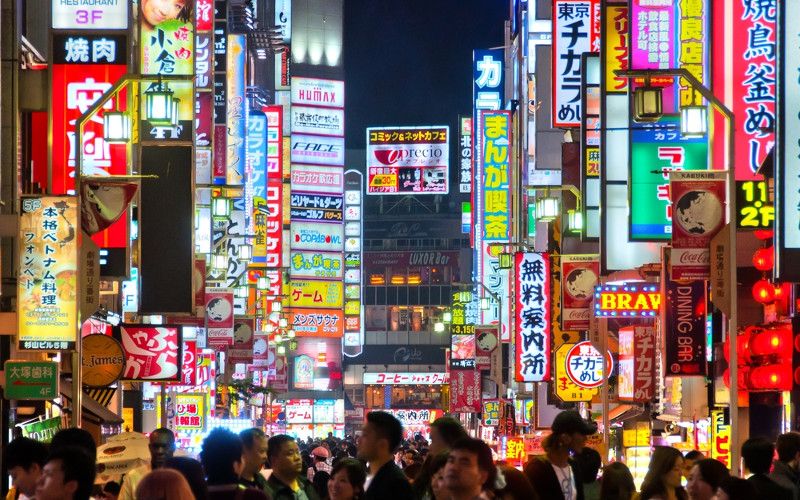
Tokyo and Osaka are Japan’s two biggest cities and are both fascinating places to visit. Tokyo is Japan’s capital and most popular tourist destination and Osaka has its own unique charm. It is renowned for its modern architecture, incredible restaurants, lively nightlife, and its 16th-century castle .
Traveling from Osaka to Tokyo (and vice versa) is simple. The two cities are very well-connected and there is a range of options when deciding how to make the journey. The fastest way is the Shinkansen bullet trains which are covered by the JR Pass .
You can also go from Osaka to Tokyo by car or bus (though the journey time is longer) or by air (which is more expensive and less convenient than a Shinkansen train). The distance from Tokyo to Osaka is 247 miles (397 kilometers).
Osaka to Tokyo by Shinkansen bullet train
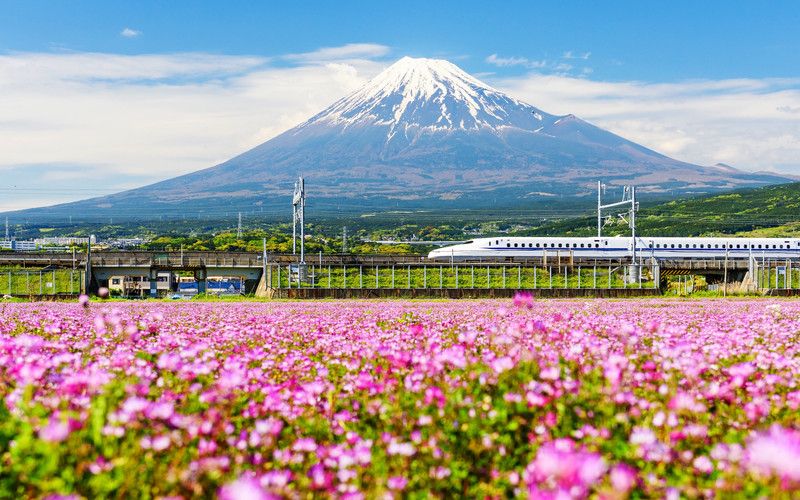
Tokyo and Osaka are connected by the Tokaido Shinkansen line . There are three different types of trains which operate on this line from Shin-Osaka Station to Tokyo Station : the Nozomi, Hikari, and Kodama . They differ in terms of how many stops they make and, as a result, how long the journey is.
Travel time
The Nozomi is the fastest train as it completes the journey in just 2 hours and 30 minutes . However, they are not covered by the JR Pass. The quickest option using your pass is the Hikari trains which just over three hours . The Kodama trains stop at every station and take over four hours.
Travel cost
The most economical way of using the Shinkansen bullet trains is with a JR Pass as the individual tickets are relatively expensive. The travel between Tokyo and Osaka , a one-way ticket costs around 14,500 yen on a Nozomi train or 13,500 yen on a Hikari train. It is possible to get a discount ticket on a Kodama train if you book at least one day in advance.
In comparison, a 7-day JR Pass costs around 28,500 yen, the same price as two one-way tickets from Osaka to Tokyo. The JR Pass gives you unlimited travel and covers buses, ferries, and airport transfers as well as bullet trains. As long as you make a few journeys during your trip, you will make big savings with the pass.
Book your Japan Rail Pass now
Osaka to Tokyo by Bus
There are various companies offering bus services between Osaka and Tokyo . It is one of the cheapest options (the cost varies between 4,000 and 8,000 yen) but the journey takes between 7 and 9 hours . Bus timetables can be found on the websites of individual operators.
One option, which allows you to do a day trip to Osaka from Tokyo , is to catch a night bus. Each evening, buses leave Osaka in the evening and reach Tokyo at 6 or 7 in the morning . If you’re a light sleeper this is not the best idea as some people find the seats uncomfortable.
Two reliable operators are JR Bus and Willer Express . JR Bus services run from the JR Express Bus Terminal at Osaka Station to various stops in Tokyo (Shinjuku, Ikebukuro, Tokyo Station, and Yokohama). Willer Express run night bus services and offer comfier seats for more expensive prices. Their buses depart from their office at the Umeda Sky Building and make various stops.
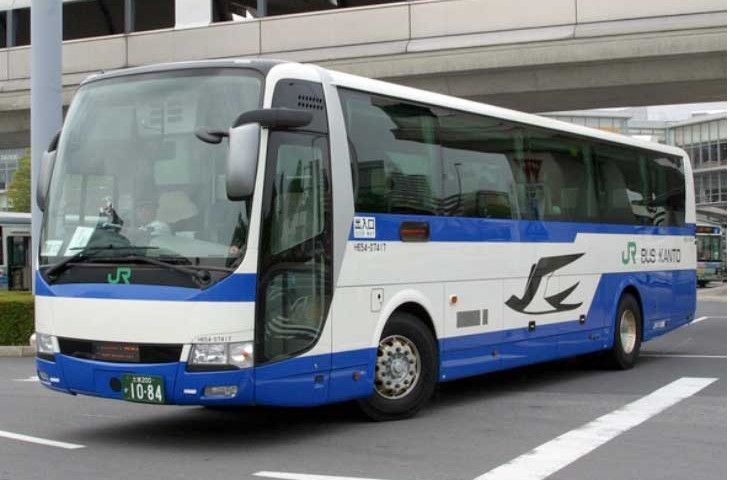
Osaka to Tokyo by Plane
Osaka has two airports ( Kansai International Airport and Osaka Itami Airport) which both offer frequent flights to and from Tokyo. The flight takes around 1 hour and 15 minutes and can cost anything between 12,000 and 30,000 yen.
Though the flight times are short you also have to factor in getting to the airport and getting through security. In most cases, it is both easier, cheaper, and quicker to get a Shinkansen bullet train .
To get the best flight prices you should book your flights two months in advance . In addition, the more flexible you are over the travel dates, the cheaper the flights you can find.
Osaka to Tokyo by Car
Driving from Osaka to Tokyo takes around 5 or 6 hours depending on the traffic. You can either take the Chuo Expressway or the Tomei Expressway .
However, the toll fees are high (around 10,000 yens) which means it is not the cheapest way of getting to Tokyo from Osaka . You also have to factor in the cost of car rental and fuel.
Related posts
Related tours & activities.
7 hours in Osaka – Day Trip Itinerary from Kyoto/ Tokyo

Osaka is the largest metropolitan area on the west side of Japan. Although it may look similar to Tokyo at first glance, there are many differences between these two cities. If you have learned Japanese before, you may even notice the different dialects spoken in the Kansai area which includes Osaka, Kyoto, and four other prefectures. The Kansai dialect is known for sounding a little more aggressive, but don’t be fooled – Kansai people are very friendly and kind. To give you a better idea, some compare Osaka to Southern France while Tokyo is like Paris, or Osaka is like California while Tokyo is New York!
You can enjoy a more lively atmosphere in Osaka and meet many fun locals. Also, Osaka attracts many tourists for its delicious specialty foods. In this article, we will share our suggested one-day itinerary in Osaka and how to get there from Kyoto or Osaka, and last but not least, local foods that you shouldn’t miss!
Recommended tours in Osaka:
How to get to Osaka from Kyoto or Tokyo?
10:00 am: jr osaka station ①, 10:30 am: osaka castle ②, 1 pm: suijo bus aqua-liner ③, 1:40 pm: abeno harukas at tennoji area ④, 2:30 pm : shinsekai area ⑤, 3 pm: kuromon market ⑥, 4 pm: dotonbori area ⑦, 5 pm: back to jr osaka station ①, okonomiyaki, kushi katsu, map of osaka with the spots we included on the itinerary, find the other tours, recommended hotels in osaka, let’s start planning your next osaka trip.
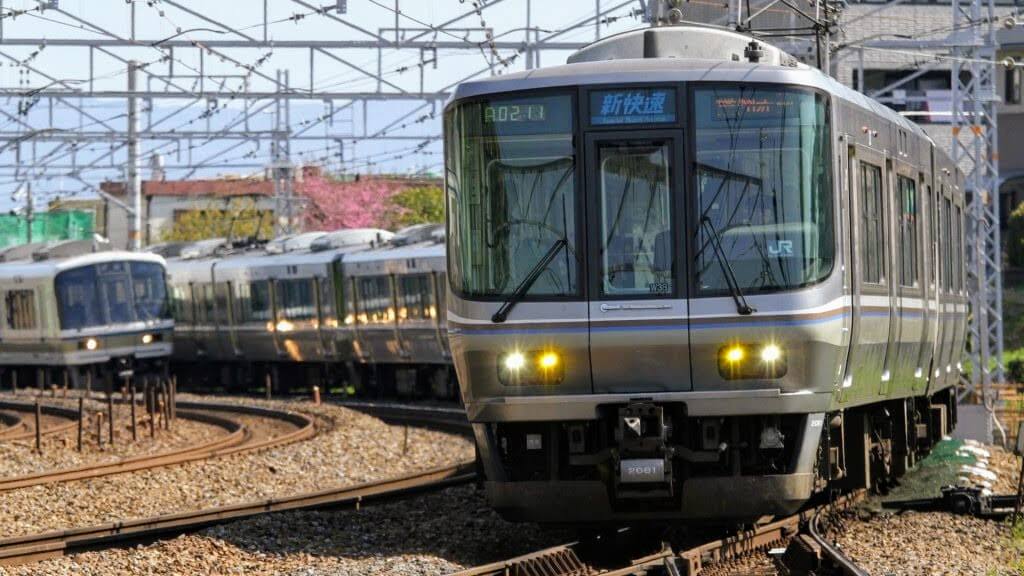
From Kyoto 【 JR Line 】 JR Kyoto – JR Osaka station: 560 yen / 30 min *If you already have a JR pass, there is no extra charge From Tokyo 【 Shinkansen 】 JR Tokyo station – JR Shin Osaka station: 14,450 yen / less than 3 hour *If you already have a JR pass, there is no extra charge
Suggested itinerary in Osaka
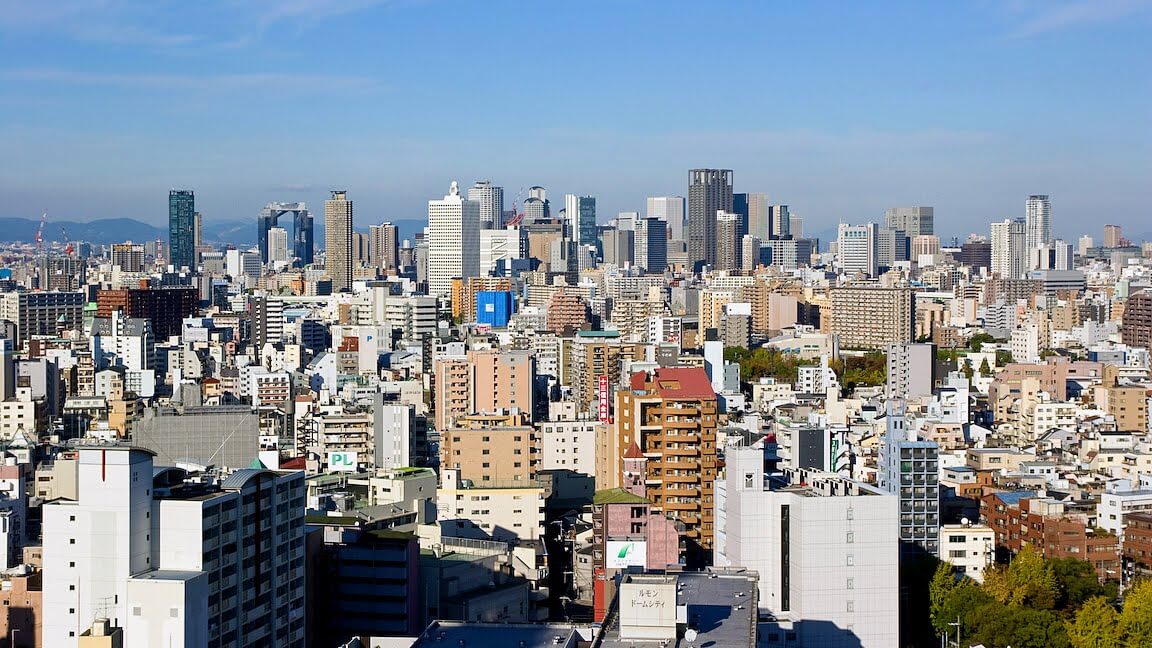
Welcome to Osaka! We have put together a 7-8 hour itinerary for you to explore the city. You can find all the places we have included on the map provided at the end of the article. Each location is labeled with a number for easy reference (e.g. Osaka station is labeled as ①).

Osaka Station is located in the northern part of Osaka and it is a major station in Kansai. The North Gate Building opened in 2011 and you can enjoy shopping in GRAND FRONT OSAKA . It is a developing area so if you want to know more about the area, check the article below!

The castle tower is surrounded by secondary citadels, gates, turrets, impressive stone walls, moats, and huge parks. This park is one of the most popular hanami spots which literally means flower viewing spot during the cherry blossom season, which usually takes place in early April.
▶ Osaka Castle and the Sumiyoshi Taisha Shrine Tour
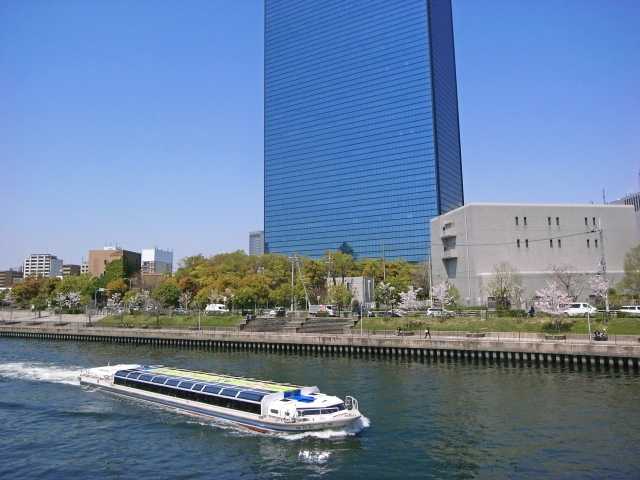
The Suijo Bus Aqua-liner allows you to explore Nakanoshima Island from the water. On their Osaka Castle and Nakanoshima course , you can enjoy the local scenery on the Ogawa River from the boat. The Aqualiner’s glass ceiling can be lowered to pass under the lower bridges which adds a thrilling taste to the tour. We recommend their course from Osaka Castle to Yodoyabashi. It takes only 20 mins and costs 940 yen. It’s a bit short but you can enjoy this activity.

Standing at 300 meters, Abeno Harukas is the tallest skyscraper in Japan. The observation deck is called “ Harukas 300 ” and occupies the building’s top three floors (floors 58 to 60). Take the elevators from the 16th floor to get to the observation deck. With large floor-to-ceiling windows all around, the 60th floor offers 360-degree views of Osaka, while the 58th floor features an attractively designed inner court with a wooden deck and cafe. A souvenir shop and restrooms with views are also must-sees. ▶Get e-tickets for Harukas 300 Observatory
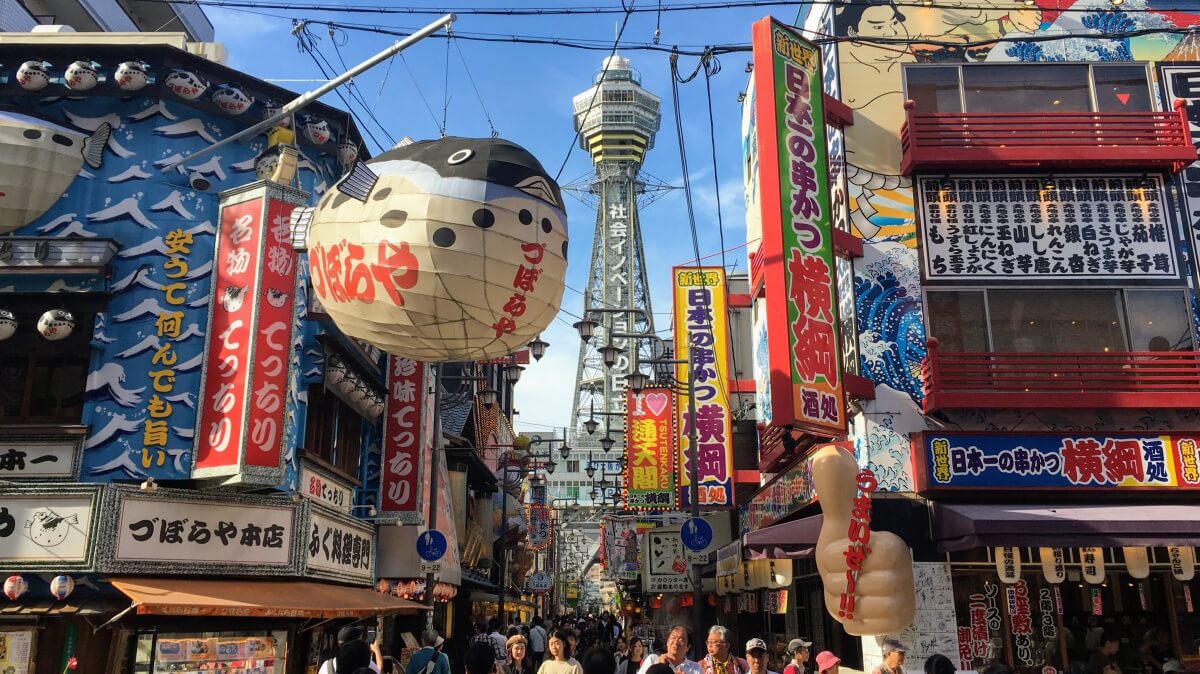
At the beginning of the 20th Century, the Shinsekai area flourished. Today, only a little bustle atmosphere remains, but many old eating and drinking establishments can still be found. One highlight of this area is Tsutenkaku Tower and Jan-Jan Yokocho Lane, which runs along one side of Shin-Sekai. This dining and shopping street is where laborers who rebuilt Osaka after World War II gathered, and it still contains Japanese-style pubs and cheap cafeteria-like restaurants with unique menus that include Kushi-Katsu and Kasu Udon. It’s an entertainment district for locals which is the same as it has always been. To learn more about the area, check the article below!

Kuromon Ichiba is a lively covered market that stretches for 580 meters in the Nipponbashi area. This market street is often called “Osaka’s Kitchen” because both local homeowners and restaurant chefs get their supplies here since the market is famous for its fresh seafood and street food. Take a guided tour to enjoy the market appropriately. You can find delicious local foods on the street while listening to the story behind the area.
The lively entertainment area of Dotonbori is Osaka’s most famous tourist destination and is renowned for its gaudy neon lights, extravagant signage, and enormous variety of restaurants and bars. You can walk to the Dotonbori area from Kuromon Market. There are Namba Grand Kagetsu and Doguyasuji Street in this area. Dotonbori is famous for its eye-catching signage and billboards with a giant pufferfish, an octopus, a clown, and the Kani Douraku crab all vying for your attention and creating an amusement park-like atmosphere. Of all these signs, however, the most famous one is the Glico running man above Ebisubashi Bridge. Take a picture with the Glico sign!
It is time to go back to Kyoto or Tokyo. Osaka is a perfect day trip destination and if you haven’t added it to your Japan trip itinerary yet, don’t worry. It is not too late to add this one-day Osaka itinerary to yours!
If you have time, check out the Floating Garden Observatory at Umeda Sky Building (⑧ on the map) before you take a train back to your stay.
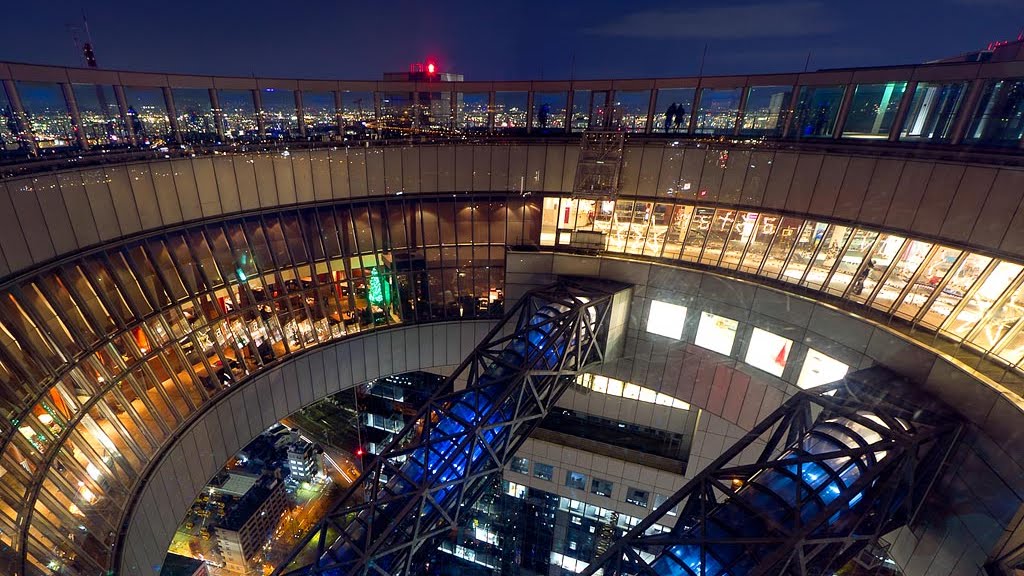
Umeda Sky building is located near JR Osaka Station. You can spend time on the open-air rooftop of this 568-foot-high, 40-stories building overlooking the city of Osaka. It opens until 10:30 pm (the last admission is 10 pm) and it is perfect for sunset or night view.
What should you eat in Osaka?
Do you know the word “ Kuidaore “? This is a very famous word that is often used to describe Osaka.”Kuidaore” means “Eat until you drop” so you should spend money and eat a lot of food! In Osaka, there are many delicious street foods. Here we listed the three most popular foods which are your must-try when you visit Osaka.
A ball-shaped Japanese light meal containing pieces of octopus inside, Takoyaki is one of the best street foods in Japan and also a popular home-cooking meal for many people in Osaka. Almost everyone who lives in Osaka has a Takoyaki-making machine at home!

Okonomiyaki is often described as a Japanese savory pancake. The ingredients could be varied but the popular ones are vegetables and pork or seafood. You can make it by yourself at the restaurant and it will be a very fun experience for you!
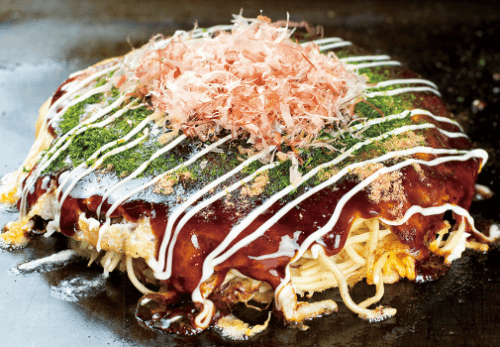
Kushi katsu is a deep-fried skewered meat and vegetable. You dip them into the thick sauce but some restaurants have the very unique rule such as not allowing to dip into the sauce twice!

Also, each area in Japan has its own specialty food. We highly recommend checking out the local foods in each area before traveling to Japan!
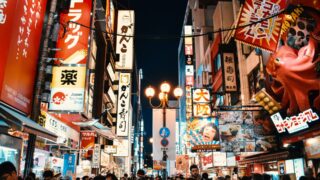
Japan Wonder Travel Tours in Osaka
If you are planning on visiting Osaka and need some help organizing your trip, you came to the right place! We would be more than happy to help make your trip the best it possibly could be. We can advise you on where to go, or even better, hook you up with a local English speaking guide that can show you all of the best spots. Let us help you make fun, safe, and unforgettable memories in Osaka!
▶ Osaka Highlights Private Walking Tour On this full-day private tour of Osaka, we will take you to Osaka’s highlights that include Osaka Castle, Kuromon Market, the popular Dotonbori area, etc. Learn about the rich history of the area, local lifestyle, and of course delicious Osaka food!
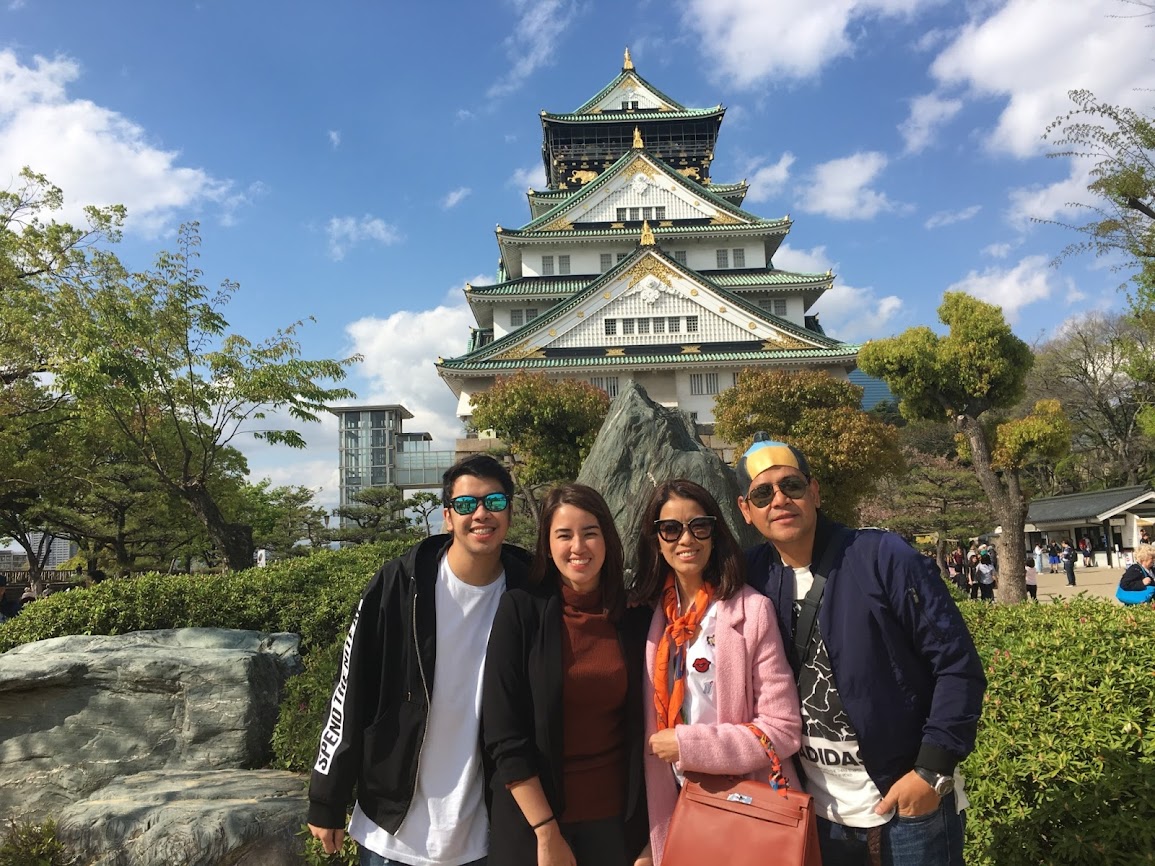
▶ Osaka Tenjinbashi Local Street Walking Tour Walk around the Tenjinbashi area with an experienced and knowledgeable English speaking guide! You can find all of the local secret hidden gems along the way. This tour also includes some delicious street food and drink.
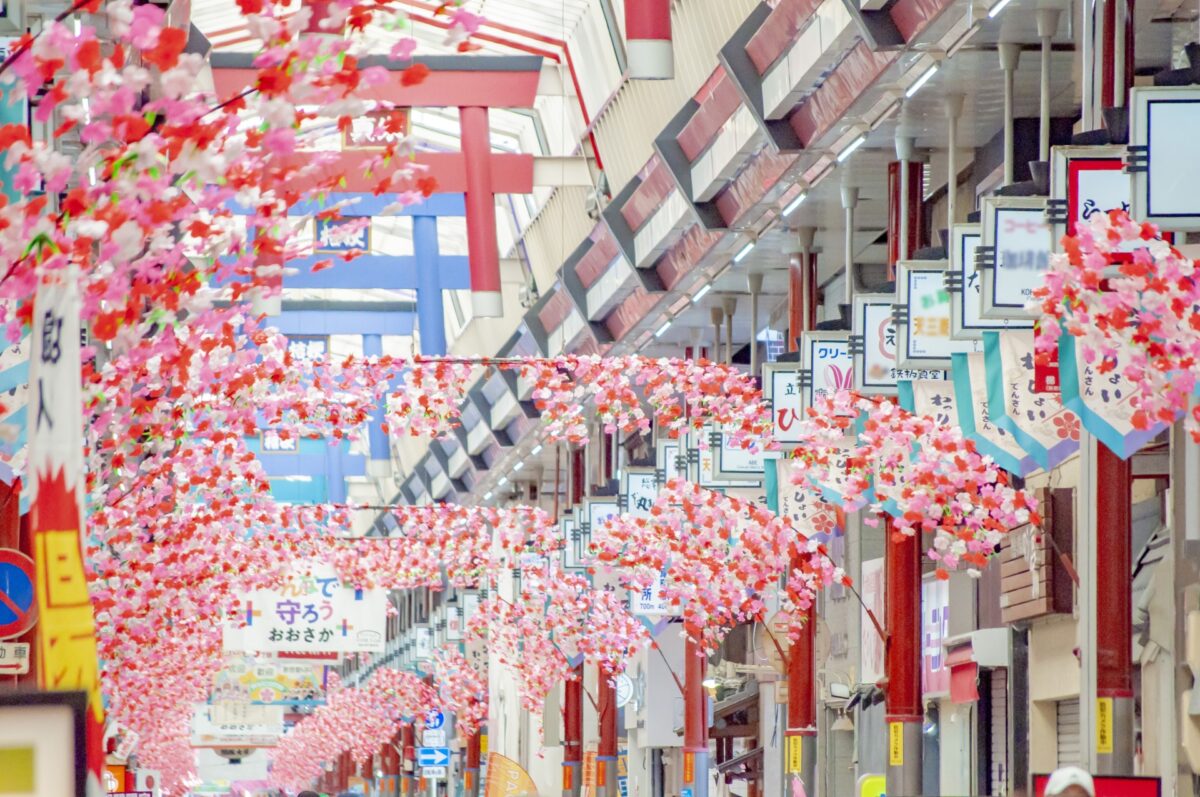
▶ Kyoto Food and Drink Tour @Nishiki Street & Gion If you’re planning on visiting Kyoto along with Osaka and are looking to learn more about the culture and local cuisine, this is definitely the perfect tour for you! Take part in this fun food and drink tour and explore the 400-year-old market and the famous Gion district.
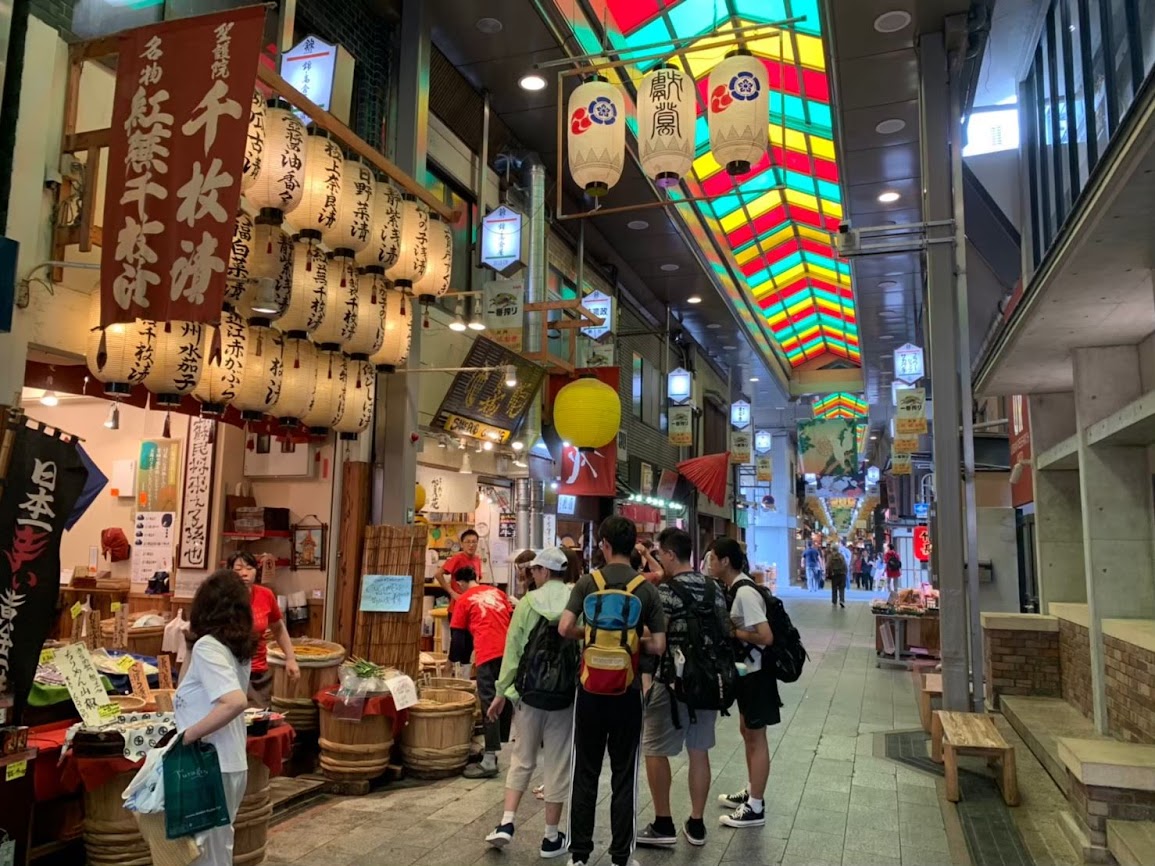
▶ Tour Packages If you want to make travel easier, we suggest you look into tour packages.There are a wide range of tour packages out there to suit the accomodate for each traveler needs. Click the button below to find the best tour package from various Tour Operators!

- Popular destinations
- Hidden places in Japan
- Tours and workshop
- Food and drink in Japan
- Itinerary in Japan
- Places to visit in Tokyo
- Food and drink in Tokyo
- Seasonal events
- Tours & workshops
- Tokyo This Week
- Day trip from Tokyo
- Itinerary in Tokyo
- Places to visit in Kyoto
- Food and drink in Kyoto
- Itinerary in Kyoto
- Day trip from Kyoto
- Travel tips
- Accommodation
- Cultural tips
- Transportation
- Tokyo Tours
- Kyoto Tours
- Kimono Rental
- Fukushima Tours
- Mount Fuji Tours
- Tour Package
- Media Kit(English/日本語)
Tokyo Osaka
¥ : JPY
★ Best price of the month
Conditional search
Highway bus/night bus search, seat type (per row), facility / service.
- Individual seat
- Ladies seat policy
- Spacious seat
- With a toilet
- Reserved seat
WILLER EXPRESS original seats
Bus company.
The bus you were looking for could not be found. Change the conditions and search again.
- List of buses departing from
- List of buses arriving at
Here is a list of express bus routes that can be reached from {0} . Availability up to three months ahead is displayed.
Here is a list of express bus routes that can go to {0} . Availability up to three months ahead is displayed.
- 2 seats per row
- 3 seats per row
- 4 seats per row
- Movie streaming
- Battery charge
Japan Travel Log
Credit card
Convenience store
#_BUS_SERVICE_NAME_#
Boarding place
Alighting place
#_SEAT_TYPE_NAME_#
#_SEAT_TYPE_# #_SEAT_TYPE_MIN_PRICE_#
Trip within a Trip: Osaka and Kyoto, Japan

May 1, 2024 • 9 min read
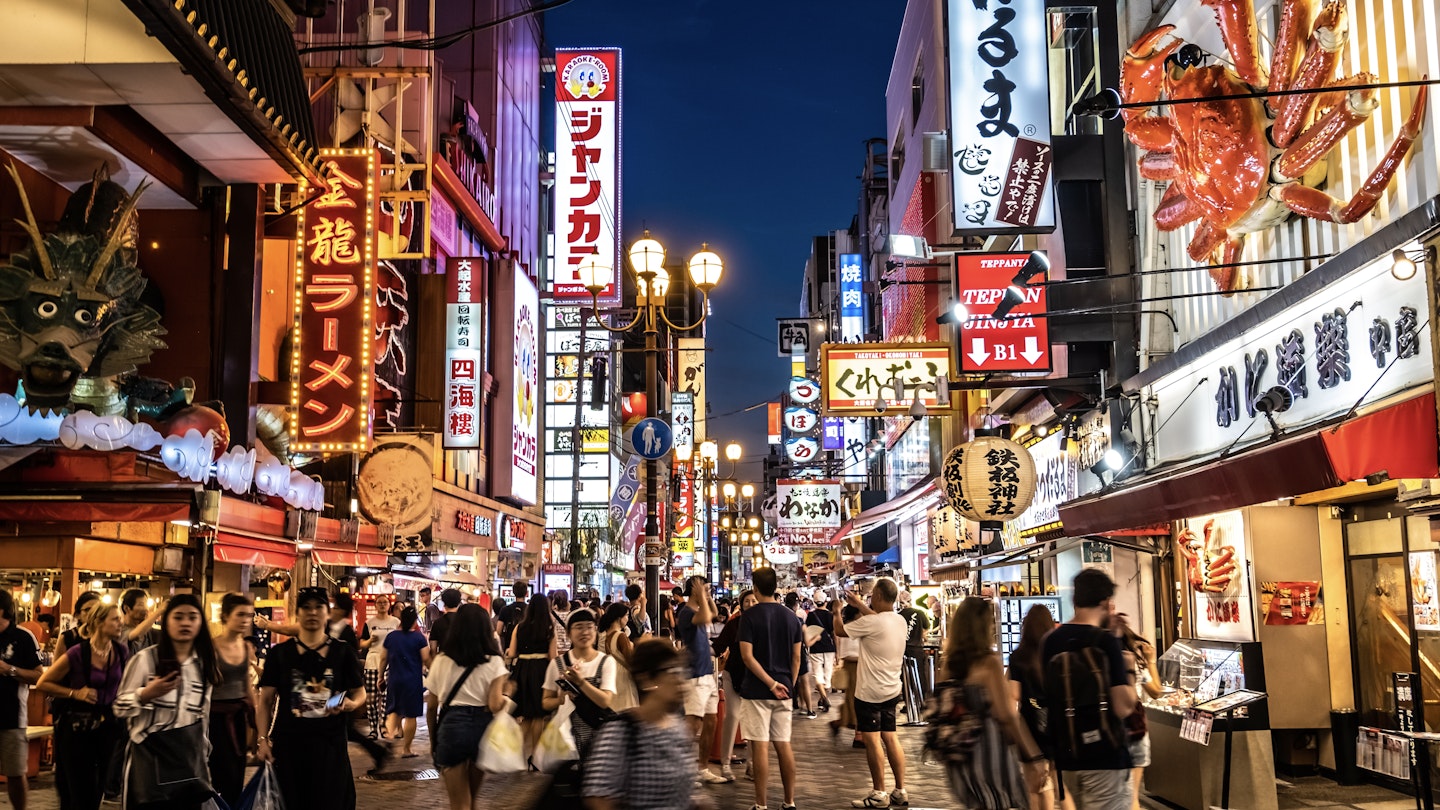
Make your next trip to Japan even better by adding on four days in exciting Osaka (pictured) and Kyoto © EarnestTse / Shutterstock
Senior Director of Content Laura Motta recently spent 10 days in Japan . To make the most of her time in the country, she included a four-day mini-excursion to Osaka and Kyoto – a trip within a trip, if you will, which anyone can replicate.
Everyone goes to Tokyo , and I would never tell you to skip it. But another critical part of any Japan itinerary is that magical Shinkansen (bullet train) ride south to Osaka , and the astounding sites that await beyond. A mind-boggling pair of cities – Osaka and Kyoto – are crammed with more shrines and temples, steel-and-glass skyscraper malls, scenic vistas and world-class restaurants than you can experience in a month, never mind in just a few days. This was my third trip to Japan and my second time visiting Osaka and Kyoto.
Before I get to my recommendations, here are a few practical tips:
- When to arrive: Arriving in Osaka around midday lets you drop your bags at the hotel, rest and then hit Dōtonbori in the evening, when its famous neon lights are ablaze.
- Getting there from the airport: The spotless, inexpensive airport limousine bus from Kansai Airport makes eight stops in Osaka, which include all of its main train stations.
- Getting around: Japan is world-famous for the ease and comprehensiveness of its public transit for a reason. You can – and certainly should – do this route without a car. High-speed (more expensive/faster) and local (less expensive/slower) trains cover every inch of this region and will shuttle you quickly between Kyoto and Osaka. Both cities have easy-to-use subway systems.
- What to pack: Certainly, your walking shoes and room in your stomach for a lot of ramen. Keep in mind that Japan has four distinct seasons and temperatures vary significantly between them. Check the weather ahead of time – and pack accordingly.
- How to structure your days: It’s tempting to cram your schedule when there are so many things to see. Yet realistically, you won’t be able to do more than two major sites – maybe three, if you’re really going for it – in a single day. This is especially true in Kyoto, where the best sites are far apart and can require up to an hour of travel to reach.
- Take it easy: Don’t forget to eat, hydrate, rest and wander. And tell yourself you’ll be back.
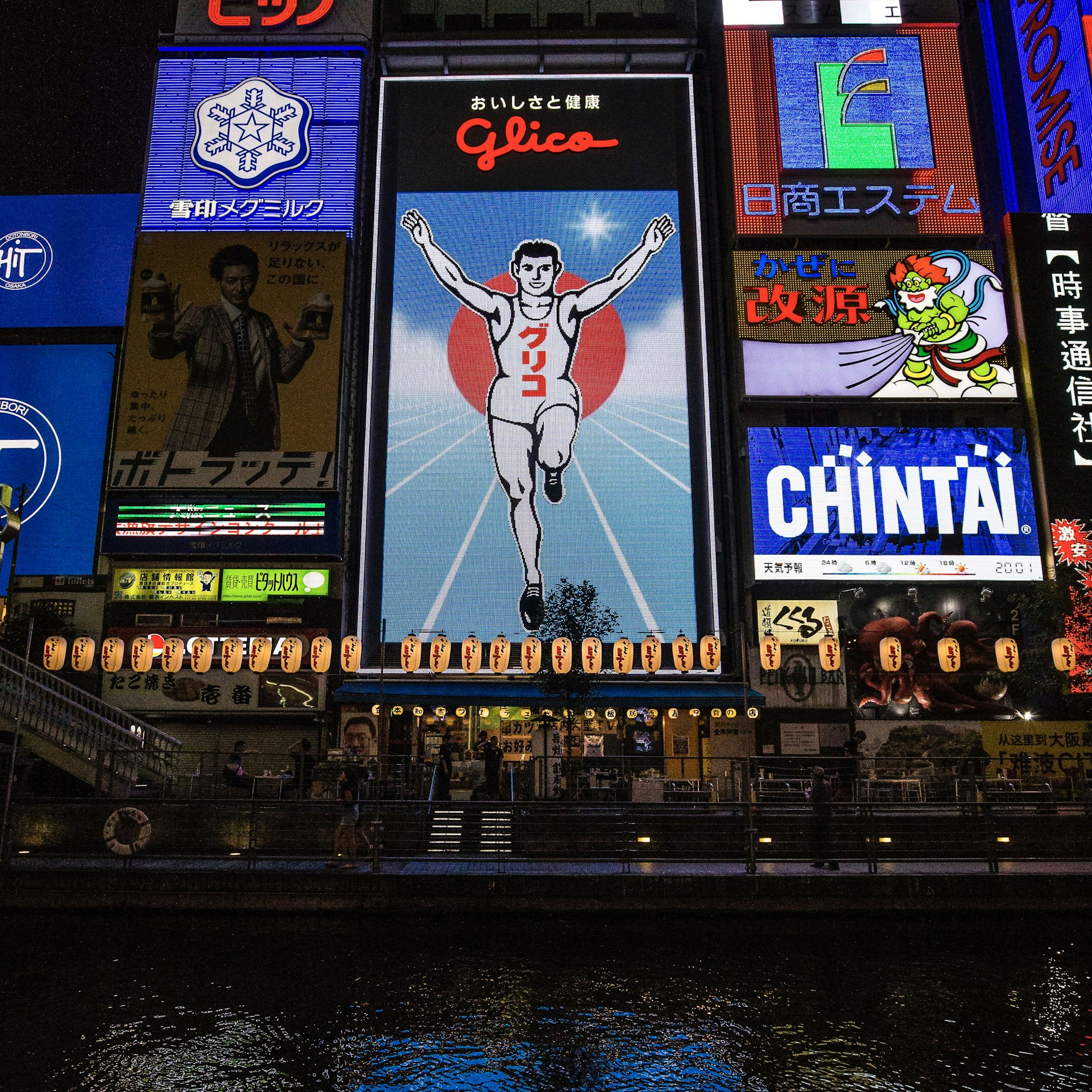
Day 1: Osaka
Snack time .
You’ve been traveling all morning. It’s time to eat. (Unless, of course, you stuffed yourself en route on the amazing bento boxes you can get at Tokyo Station.) Keep it simple like I did and grab onigiri (rice balls) or a sando at 7-Eleven. There’s one on every corner, you’ll only spend a few dollars, and buying local snacks – especially in Japan – is among travel’s greatest joys.
See the neon
If you’re in Osaka, go see the Glico man. It's a rule. Or maybe it's just mine. This famous animated sign of a runner, arms raised, about to cross the finish line in some hypothetical marathon in the sky, remains delightful despite the tourist crush on the streets below. This ad for the Glico candy company (candy bars give you energy – get it?) has become an informal mascot of Dotonbori , Osaka’s dining and nightlife district. After dark, it’s fun to wander here through the area’s many arcades, claw-machine and pachinko parlors, and shops. If you start here on a weeknight, it’s delightfully quiet.
Insider tip: Arrive before sunset and duck into a tiny side street to Hōzen-ji , a small temple known for its moss-covered statues. I was there when they were lighting the lanterns for the evening – a dreamy experience indeed.
Have a cheap and cheerful dinner
Dontonbori is teeming with restaurants. You can’t miss the distinctive signage advertising takoyaki (grilled octopus balls), gyoza and crab. My favorite takoyaki stand, Takoyaki Yoriabunzemon, is humble compared to its bombastic neighbors; there is no 5ft marquee. Inside, you’ll sit on a well-worn barstool while the single cook pours takoyaki batter into the famous round molds and serves it to you still piping hot, and slathered in mayo, barbecue sauce and bonito flakes. A warning: if you value the skin on the roof of your mouth, do not eat too fast here.
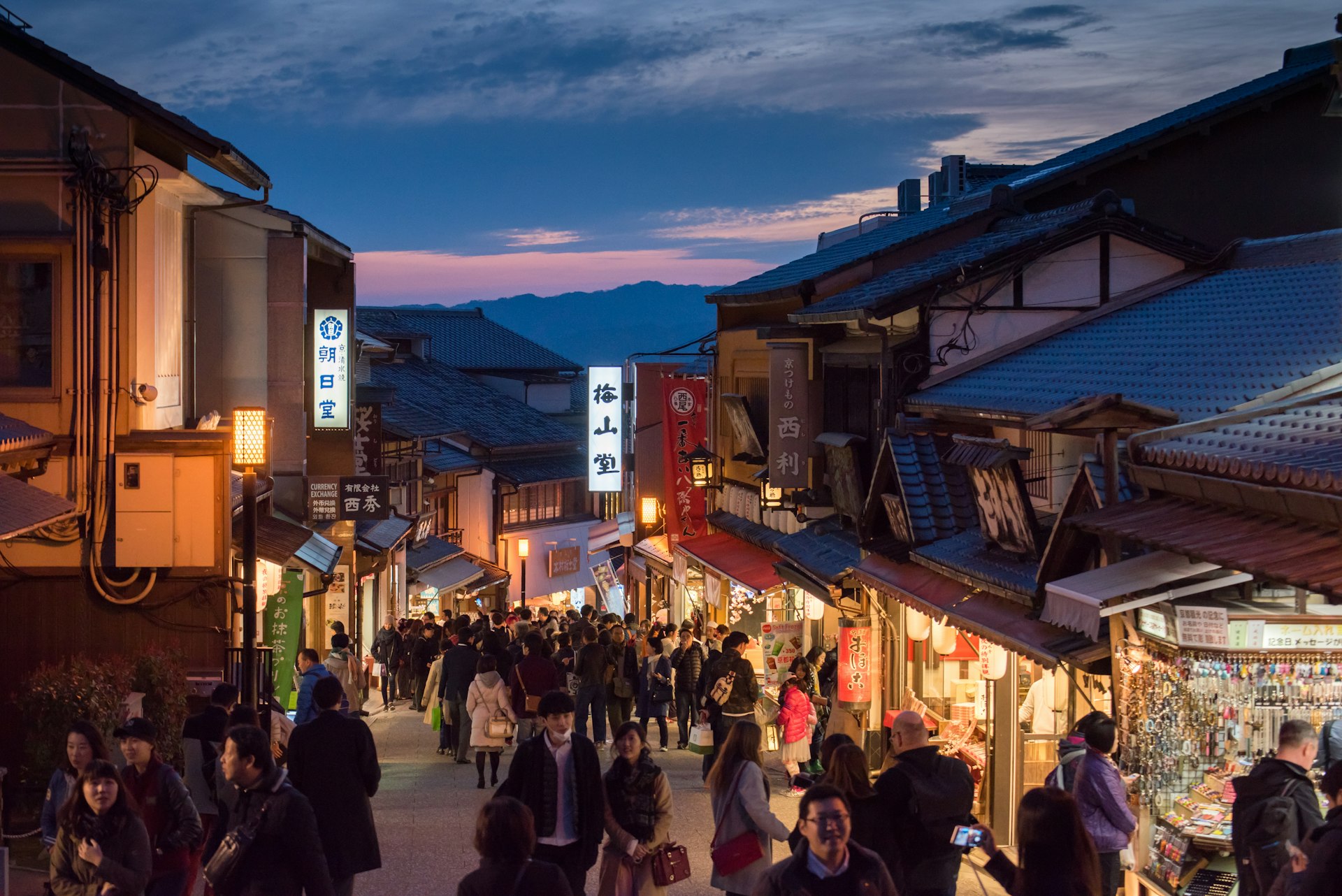
Day 2: Kyoto
Bullet train .
The Shinkansen train between Osaka and Kyoto is cheap and lightning fast. This trip is included in many Japanese rail passes , but if you’re paying for a standalone ticket, you’ll pay 1420 yen (about US$10). The trip takes 15 minutes, so slower local trains hardly seem worth the mildly cheaper price. Arrive midday and head to your hotel to check in and drop your luggage. Before you depart, don’t forget to look around Kyoto Station for the eki ink stamp, which you can imprint into a notebook as a souvenir. Every train station in Japan has a uniquely designed stamp, even if you sometimes have to ask the attendant at smaller stations where to find it.
Stay in style
If there’s one place to splurge on a fabulous hotel in Japan, it’s in Kyoto. Whether you’re strolling under vibrant fall leaves or spring cherry blossoms, or wandering the narrow alleys and stepped streets of the Gion district , Kyoto is romantic, its temples and shrines otherworldly. My choice was Hotel the Mitsui Kyoto , a new luxury property that blends smart contemporary design with traditional Japanese accents. Beside its excellent restaurant – more on that below – the highlight is the hotel's updated approach to the traditional onsen . This vast, moodily lit indoor space offers heated pools and loungers amid beautiful rock formations and water features. And unlike many onsen experiences, this one is a bathing-suits-required, mixed-gender space where everyone can hang out. There is also no surcharge for entry.

Visit the temples
My boyfriend cheekily refers to Fushimi Inari Taisha , Kyoto’s famous shrine with its rows and rows of vermillion gates ascending a dramatic hillside, as “the Instagram shrine.” It’s hard to say that he’s wrong: the site is a favorite among foreign travelers for good reason. The gates are simply gorgeous and – yes – photogenic. Just don’t expect to find yourself there alone.
Insider tip: Afterward, stop at the charming Vermillion Cafe for a sweet snack and coffee. Sit on the back porch, which overlooks a lovely stretch of forest, for especially serene vibes (spectacular in autumn).
If you still have energy left in the afternoon, head to Nishi Hongan-ji , a mammoth Buddhist temple complex that’s home to some of the largest wooden structures in Japan. After you marvel at the huge lanterns and expansive halls, stop by the brightly painted Chinese Gate, which dates back to the late 1500s. This temple is also within walking distance of Kyoto Station, and can be a good place to start or end your trip.
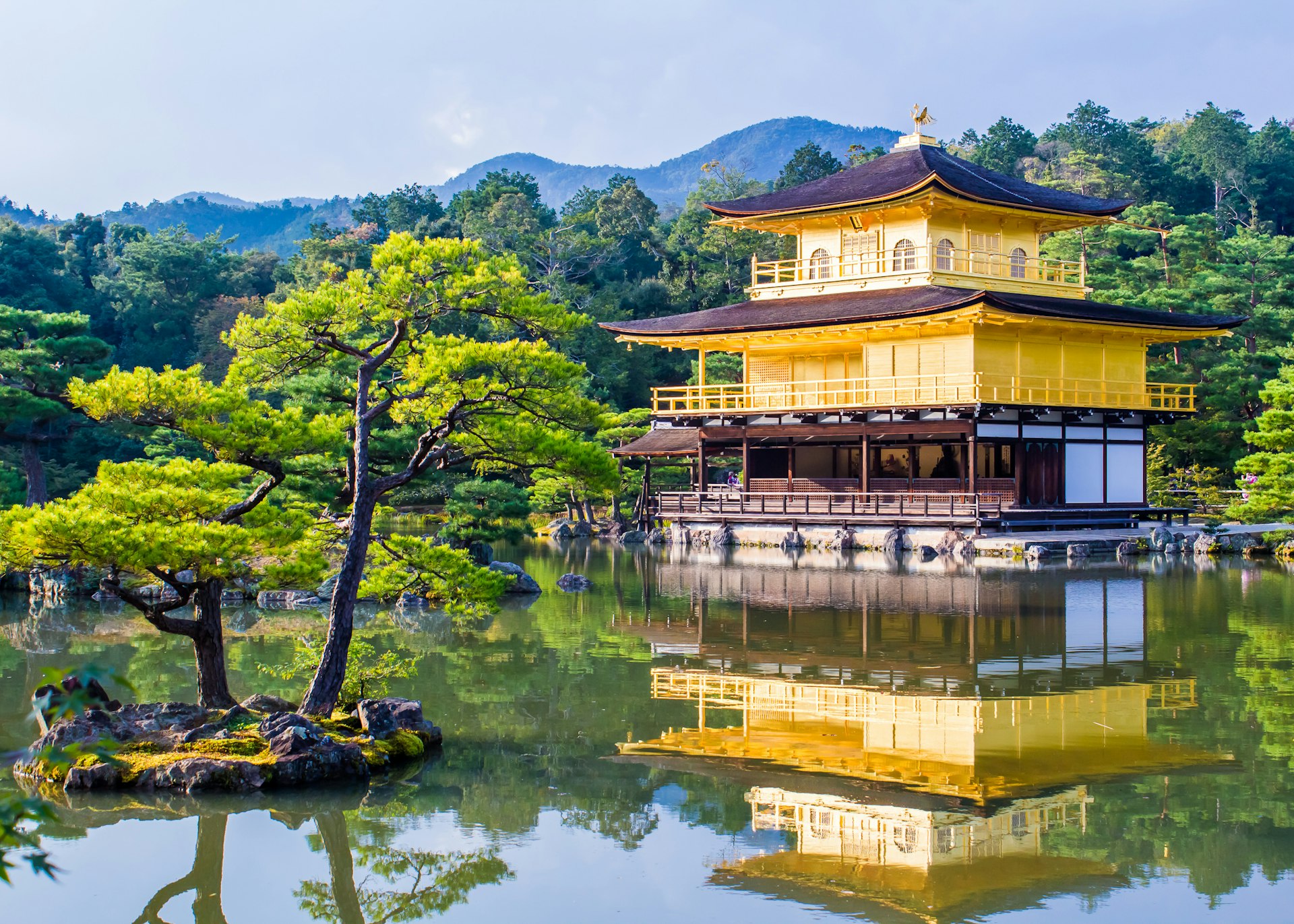
Day 3: Kyoto
Go for the gold.
Kinkaku-Ji , sometimes called the Golden Pavilion, is among Kyoto’s (and Japan’s) most famous and photographed landmarks. This UNESCO World Heritage site , where a brilliant gold temple appears to float along the shores of a serene lake, is well worth braving the crowds for, especially in sunny weather when the reflection of the lake glints off of the temple’s exterior walls. Go early, packing your patience – and you’ll understand instantly why so many people flock here.

School Bus Coffee Stop is a charming spot for an easy, affordable breakfast or lunch in cozy, industrial-farmhouse-style surroundings. Comforting selections like bagel sandwiches and avocado toast are accompanied by the shop’s excellent, house-roasted coffee.
Modern love
For an aesthetic palate cleanser after a quick lunch, stop by the Kyoto City KYOCERA Museum of Art , which houses rotating exhibits, often of contemporary and modern art, in a fantastic brick structure that dates to the 1930s.
Taste sensation
And you’d be remiss if you stayed at the Mitsui without eating at its elegantly flamboyant Italian restaurant, Forni . Yes, there are pizzas and pastas on its à la carte menu. But I’d highly recommend the tasting dinner, where impeccably composed dishes like sea bream citrus tartare and grilled wagyu arrive on geometric plates and stands. It’s a feast for the eyes as well as the stomach.
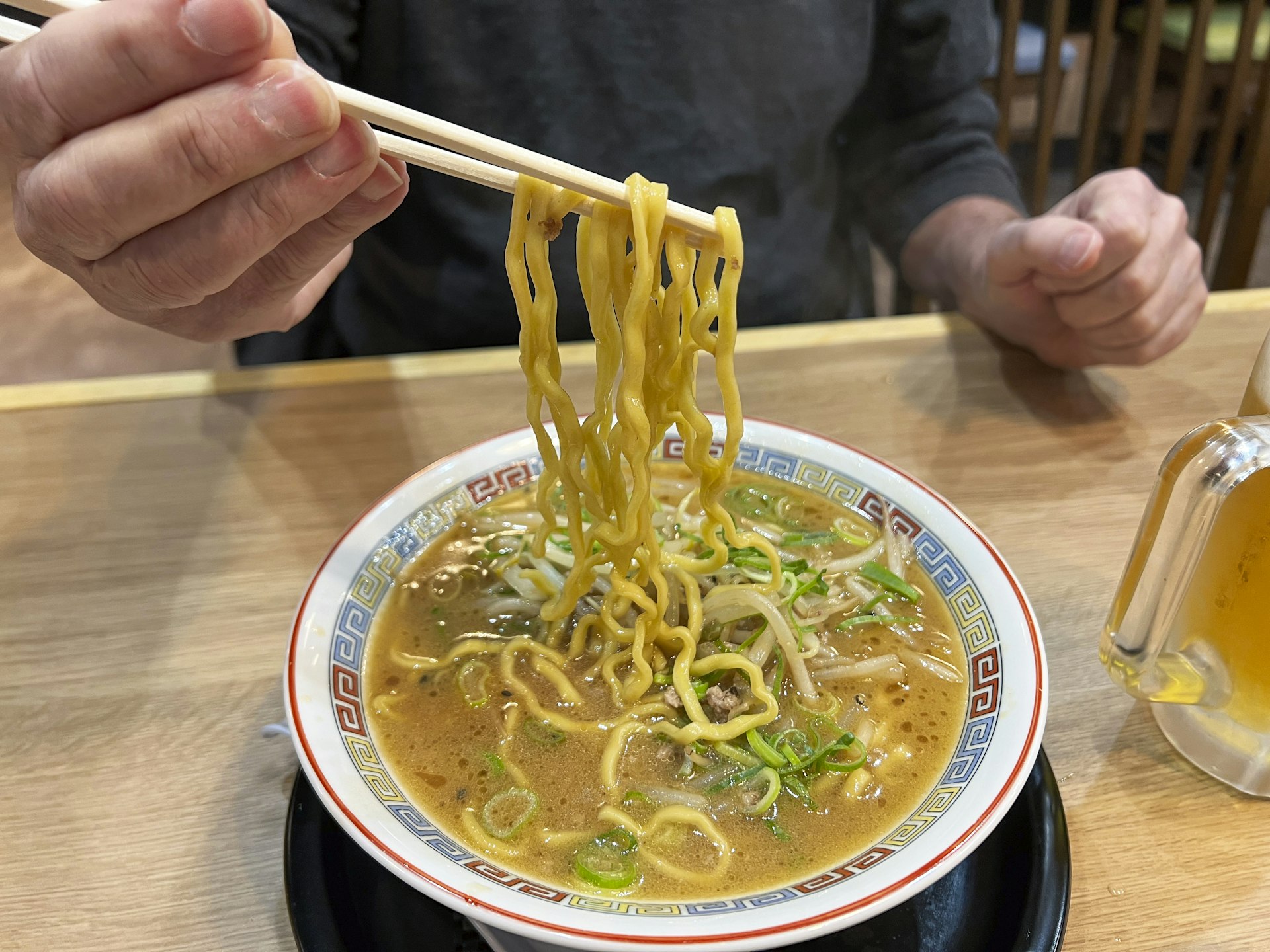
Day 4: Osaka
Smart hotel.
After going luxe in Kyoto on meals and lodging, I came back to Osaka looking to save money without sacrificing too much comfort. I wasn’t ready to sleep in a sarcophagus-sized pod or get every meal at 7-Eleven. (Well, not every meal – just a few.) After getting off the train from Kyoto at the massive Shin-Osaka Station, I took the easy-to-use metro to one of the best places I’ve stayed in Japan, the chicly designed, austere-but-comfortable Hotel Noum , just across the river from Temmabashi Station. The location made transportation connections easy and kept me sheltered from the stark urban rush of Umeda, Osaka’s high-rise business district. Rooms are small, comfortable and spotless; mine had a river view. The hotel also has an airy coffee shop in its lobby that attracts as many locals as travelers. I popped in here for a breakfast pastry and a latte and was ready to start the day.
Window(less) shopping
Even if you don’t stay in Umeda, visiting the neighborhood is a must. Spend a day wandering its cavernous, endless indoor shopping malls and underground food courts. You may never see daylight, but you will find everything from Hermès bags to the best 300-yen (US$2) gyoza you’ve ever tasted. I like to check in on the enormous red whale, which hangs suspended from the atrium of the Hep Five department store, which also happens to have a ferris wheel on its roof.
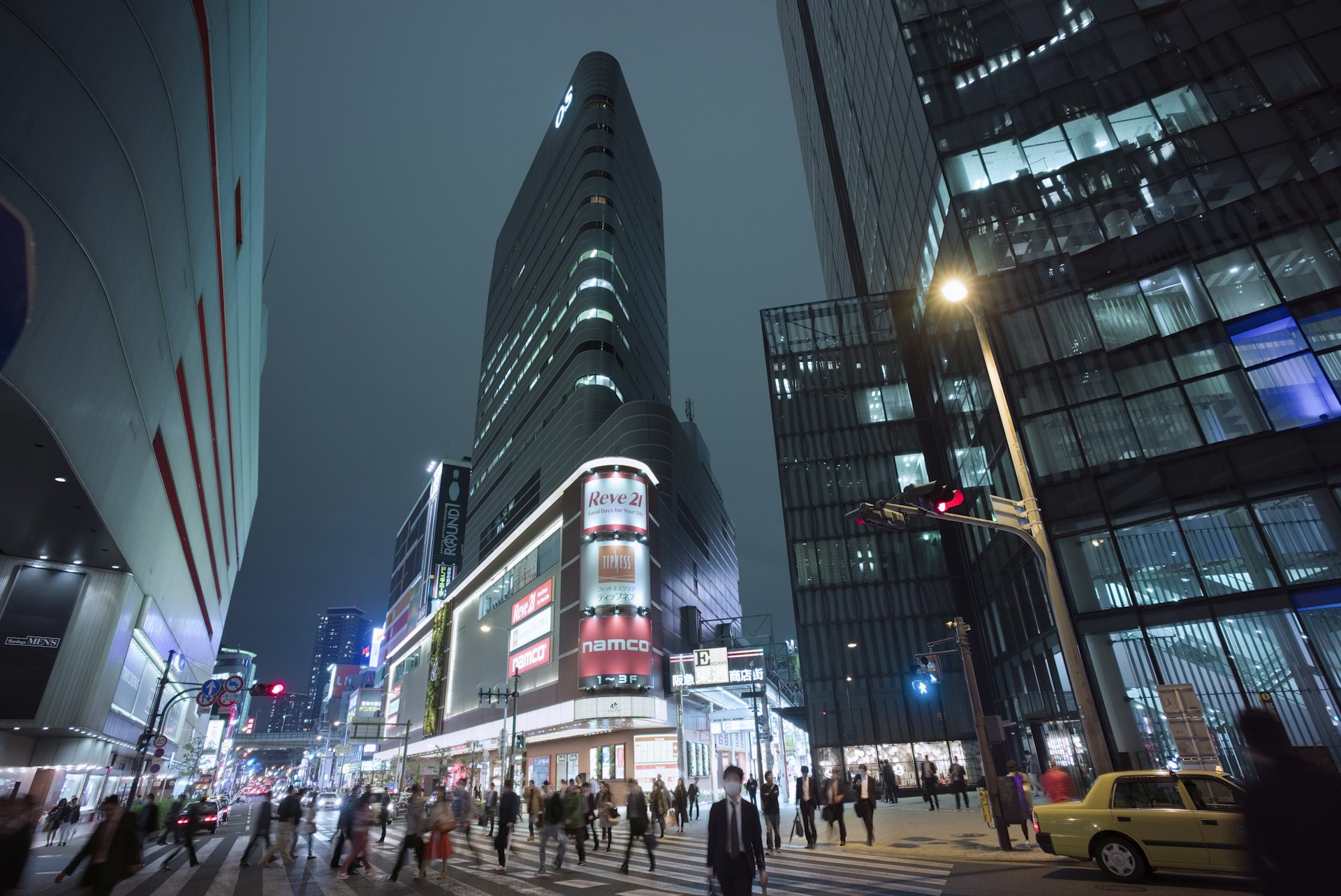
Enjoy a messy lunch
Train stations are where you’ll find some of the best food in Japan – and Osaka’s sprawling Umeda Station is no exception. My favorite train-station ramen is at Menya Takei, located behind the entry gates for the Hankyu Railway. Menya Takei specializes in tsukemen , in which the ramen noodles and broth are served separately. Dip the noodles into the broth to eat – yes, you’ll undoubtedly get it all over your clothes, but that’s part of the fun. Lots of laundry to do when you return home is a sure sign of a great trip.
Insider tip : Ask the gate agent to let you through. They’ll make you pay for a rail ticket on the way in, and then may refund you on the way out.
From Osaka, hop back onboard the Shinkansen for more exploring in Japan, or do what I did and catch a quick, affordable domestic flight to Tokyo’s Haneda airport to connect to your flight home.
Keep planning your trip to Japan:
The 24 best things to do in Japan Find out if you need a visa to enter the country Take to the open road on these top drives How to discover Japan on a budget
Explore related stories

Public Transport
Jan 31, 2020 • 7 min read
Whether you want canals, ceramics or buzzing cities, there’s a stop for you on the ‘sunny side of the mountain’. Here’s how to explore San'yō by train.

Apr 3, 2024 • 17 min read

Apr 2, 2024 • 10 min read

Mar 31, 2024 • 7 min read

Mar 28, 2024 • 7 min read

Mar 28, 2024 • 6 min read

Mar 28, 2024 • 11 min read

Mar 26, 2024 • 8 min read

- Things to Do
- Food & Drink
- Shopping & Style
- Coca-Cola Foodmarks
- Restaurants & Cafes
- Music & Nightlife
- Neighborhoods
- Los Angeles

5 samurai sites in Japan that inspired the story behind ‘Shogun’
Visit these real-life locations from the hit Disney+ series to experience the enigmatic history of feudal Japan, minus the bloodshed

Adapted from James Clavell’s eponymous 1975 novel, FX’s limited series ' Shogun ' on Disney+ throws viewers into the complex and turbulent world of Japan’s Sengoku or ‘Warring States’ period (1467-1615). This historical drama vividly portrays the power struggles and cultural clashes between feudal Japan and the Western world through the perspective of John Blackthorne, an English navigator. Shipwrecked on the Japanese coast, Blackthorne becomes deeply entangled in the deadly political intrigue of local samurai lords.
The series, which concluded its ten-episode run recently, has been celebrated as one of the best shows of 2024 , praised for its excellent acting and meticulous attention to detail. Despite being filmed entirely in Vancouver, Canada, the set design and authenticity are remarkable, thanks to a talented team of set designers and VFX specialists who collaborated with historians and Japanese experts to ensure cultural and historical accuracy.
Although the story is historical fiction, its characters are based on real figures from early 17th century Japan, where Christian missionaries, European explorers, formidable warlords and samurai defined an enthralling era. Here, we’ll take a closer look at the true events and places in Japan that inspired the story behind ‘Shogun’ – places you can still visit today.
RECOMMENDED: Places in Japan that look like scenes from 'Spirited Away'

Usuki, Oita
The story begins with English navigator John Blackthorne (Cosmo Jarvis) in poor condition as his ship and crew are marooned on the coast of a small Japanese fishing village. Blackthorne’s character is based on the story of William Adams, a navigator who was the first Englishman to reach Japan.
In the new series adaptation of ‘Shogun’, and in James Clavell’s original novel, the village that Blackthorne washes up to is a place called Ajiro in Izu province. Adams, aka the real Miura Anjin (as he's known in Japan), however, made landfall in Usuki, Oita prefecture, an area that was known as Bungo at the time.
The small fishing village of Ajiro made an ideal setting for Clavell’s story as it was perfectly situated halfway between Edo-Tokyo and Osaka. However, if you want the real samurai locale depicted in the opening episode of the series, you should plan a trip to Oita prefecture instead.
Records indicate that Adams originally landed on Kuroshima, a tiny island off Usuki’s coast. The town celebrates the anniversary of the arrival of his ship, the Liefde, every year and exhibits a model of the vessel at Usuki City Hall.
Usuki Castle, built in 1562 and pivotal in the town's history, endured numerous power struggles and wars over the ensuing years. Despite changing hands among various clans and warlords, some remnants of the castle still stand today. As referenced in Clavell's novel and the 'Shogun' series adaptation, the complex had a strong Christian influence for a time, with records by Portuguese missionary Luis Frois relating that there were many Christian facilities built near the castle and even a chapel within the castle itself.
Near the castle’s western moat lies the Nioza Historical Road, where beautifully preserved buildings that housed samurai over 400 years ago can still be visited.

Osaka Castle, Osaka
Shortly after his arrival in Japan, Adams was sent to Osaka on the orders of Tokugawa Ieyasu (Ieyasu was the model for Toranaga, Hiroyuki Sanada's character in 'Shogun'). Osaka Castle, one of Japan's most famous landmarks, has a rich history tied closely to the tumultuous period of the country’s unification in the late 16th century. Construction of the fortress began in 1583 under Toyotomi Hideyoshi, one of Japan's great unifiers. By 1599, the year following Hideyoshi's death, Osaka Castle was not only an architectural marvel but also a symbol of Toyotomi power, featuring immense stone walls and a five-storey main keep. The period from 1599 to 1602 was crucial for Osaka Castle, as the stronghold transitioned from the hands of the Toyotomi clan to becoming a focal point in the power struggle that ensued after Hideyoshi's demise. Hideyoshi's heir, Toyotomi Hideyori, was still a child, and regents were appointed to govern in his stead, leading to political instability. This era was marked by intrigue and plotting among Japan’s powerful daimyos, notably Tokugawa Ieyasu, who would eventually establish his shogunate after defeating the Toyotomi forces.

Azuchi Castle Ruins, Shiga
Azuchi Castle, once the seat of power in Japan, was an impressive fortress built during the Warring States period by the warlord Oda Nobunaga, who was the first samurai to unite Japan and is the model for the Kuroda character in ‘Shogun’. In the story, it later becomes the residence of Akechi Jinsai and his family after they pledge their loyalty to Kuroda. The castle is portrayed as not just a military stronghold but also a lavish home where Kuroda and Akechi's daughters, Ruri and Mariko, grow up. They spend their days engaging in educational activities and training in martial arts within the castle’s opulent gardens. Both in ‘Shogun’ and in real life, Azuchi Castle was strategically located atop a mountain overlooking a lake, accessible only by samurai on horseback, symbolising its builder’s immense power. The structure itself was a spectacle, with a striking tower adorned with black lacquer and colourful embellishments, gold paintings, and gilded pillars. This architectural marvel stood as a testament to power and to the aesthetic sensibilities of its era, making it a significant cultural and political landmark in Japan’s history.
Very little of the original castle remains at its site, high on a hill overlooking Lake Biwa in Shiga prefecture, but a reproduction of the keep can be taken in at Ise Sengoku Village, a samurai theme park near Ise.

Nagasaki, Kyushu
In ‘Shogun’s’ fictional portrayal, Osaka serves as a major trading hub with the presence of the iconic Portuguese Black Ship – a deviation from actual history as European trade with Japan at the time was centred on Nagasaki, not Osaka.
Historically, the Portuguese Black Ship sailed annually from Macao to Nagasaki, chosen for its protected bay and proximity to China – significantly closer than Osaka. In reality, the city of Osaka was located inland along the Yodo River, necessitating large sea-bound vessels to anchor at Denpo, near the river’s mouth. Cargo was then transferred to smaller ships that travelled upstream to the city. This setup reflected the logistical challenges of the time, as Japan did not have modern ports with wharves. Instead, small boats were used to move goods and passengers to the land from large ships anchored offshore.

Imperial Palace, Tokyo
Edo, initially a small fishing town, transformed dramatically under the governance of Tokugawa Ieyasu, who was given the area during his rivalry with the Taiko amidst Japan's power struggles. Tasked with establishing a new stronghold after failing to defeat the Taiko, Ieyasu converted Edo from a swampy region into a burgeoning city (which later became present-day Tokyo).
Within a decade, its potential as a major urban and trading hub became evident. The city expanded rapidly, with active construction, growing farmlands, and a thriving merchant area. Unlike the opulent castles of Azuchi or Osaka, Edo Castle was stark and functional, reflecting Ieyasu ’s focus on strategic growth rather than lavish decoration. This utilitarian approach extended to the city's infrastructure, prioritizing economic and defensive capabilities.
The former site of Edo Castle is now occupied by the Tokyo Imperial Palace, where the Japanese royal family resides. Most of the grounds are off limits to visitors, but you can join a guided tour of a few inner structures if you apply in advance .
More destinations around Japan

Japan's most underrated destinations – and why you should visit
Travel off the beaten track to these storybook villages, Edo-era towns with geisha (not Kyoto!) and seaside retreats

Most beautiful places you should visit in Japan
Aside from culture and tradition, Japan also offers some of the world's most spectacular landscapes. Here's your Japan bucket list
[image] [title]
Discover Time Out original video
By entering your email address you agree to our Terms of Use and Privacy Policy and consent to receive emails from Time Out about news, events, offers and partner promotions.
🙌 Awesome, you're subscribed!
Thanks for subscribing! Look out for your first newsletter in your inbox soon!
- Terms of use
- Work for Time Out
- Time Out Group
- Advertising
- Modern slavery statement
- Manage cookies
Time Out Tokyo
- Magazine subscription
- Digital edition
- Buy the guide to Tokyo
Time Out products
- Time Out Worldwide
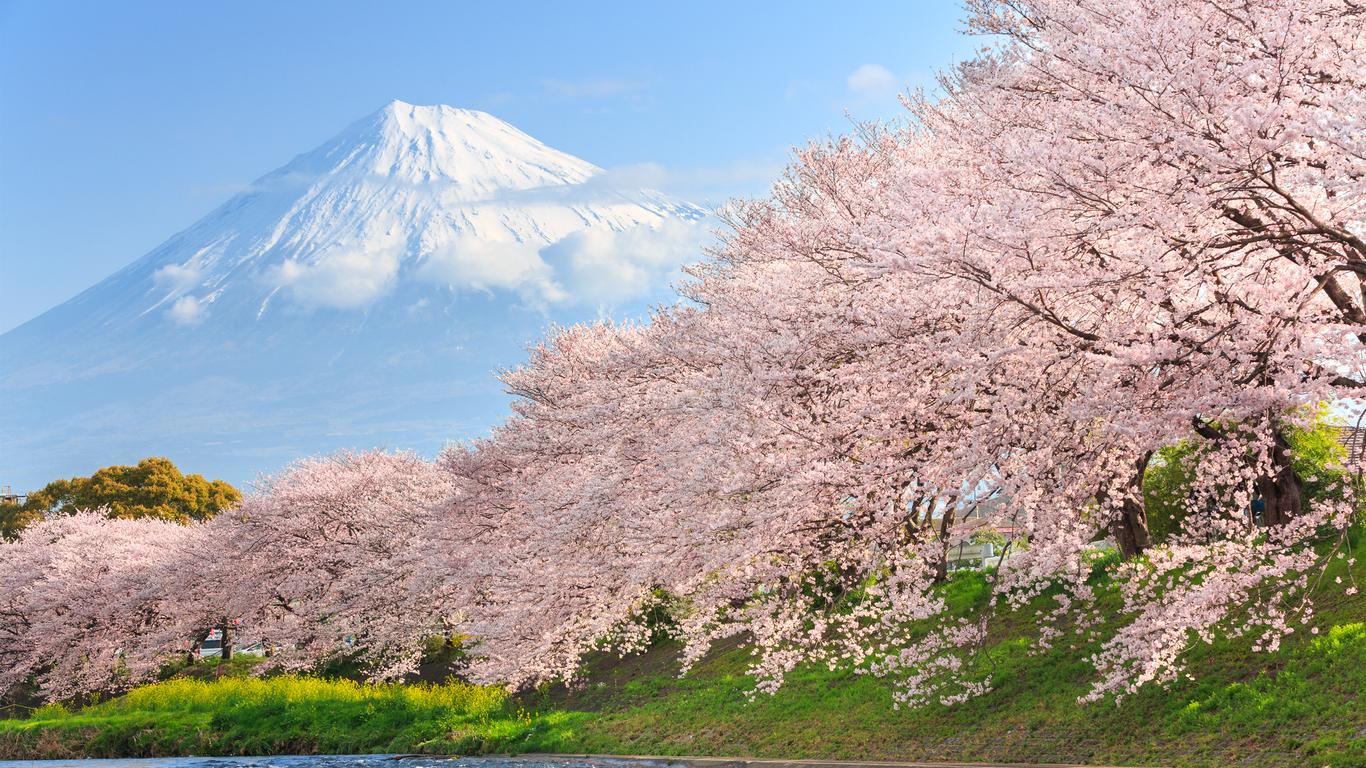
$36 Find cheap flights from Osaka to Tokyo
This is the cheapest one-way flight price found by a kayak user in the last 72 hours by searching for a flight from osaka to tokyo departing on 5/9. fares are subject to change and may not be available on all flights or dates of travel. click the price to replicate the search for this deal., search hundreds of travel sites at once for deals on flights to tokyo.
Save 22% or more Compare multiple travel sites with one search.
Track prices Not ready to book? Create a price alert for when prices drop.
Filter your deals Choose cabin class, free Wi-Fi and more.
Bundle and save Save money when you bundle your flight + hotel.
Cheap flight deals from Osaka to Tokyo (KIX-TYO)
Flights from osaka to tokyo - travel insights & trends, get data-powered insights and trends into flights from osaka to tokyo to help you find the cheapest flights, the best time to fly and much more., what is the cheapest osaka kansai intl airport to tokyo flight route, our data shows that the cheapest route for a one-way flight from osaka kansai intl airport to tokyo cost $32 and was between osaka kansai intl airport and tokyo narita airport. on average, the best prices are found if you fly this route. the average price for a return flight for this route is $32., what’s the cheapest day of the week to fly from osaka to tokyo, if you are looking for a flight deal from osaka to tokyo, look for departures on tuesdays and avoid leaving on a monday, as it's usually the priciest day. when flying back from tokyo, tuesday is the cheapest day to fly and saturday is the most expensive., what is the cheapest month to fly from osaka kansai intl airport to tokyo, the cheapest month for flights from osaka kansai intl airport to tokyo is october, where tickets cost $82 on average. on the other hand, the most expensive months are march and august, where the average cost of tickets is $118 and $115 respectively., how far in advance should i book a flight from osaka kansai intl airport to tokyo, to get a below average price on the flight from osaka kansai intl airport to tokyo, you should book around 4 days before departure. for the absolute cheapest price, our data suggests you should book 79 days before departure., which airlines provide the cheapest flights from osaka to tokyo, in the last 72 hours, the cheapest one-way ticket from osaka to tokyo found on kayak was with jetstar japan for $36. jetstar japan proposed a round-trip connection from $61 and peach from $78., which airlines fly most frequently between osaka and tokyo, ana connects osaka to tokyo with up to 12 flights per day. japan airlines also offers 5 flights per day, while jetstar japan follows with 5 flights per day., which airlines fly non-stop between osaka kansai intl airport and tokyo, there are 4 airlines that fly nonstop from osaka kansai intl airport to tokyo. they are: ana, japan airlines, jetstar japan and peach. the cheapest price of all airlines flying this route was found with jetstar japan at $37 for a one-way flight. on average, the best prices for this route can be found at peach., how many flights are there between osaka kansai intl airport and tokyo per day, each day, there are between 24 and 26 nonstop flights that take off from osaka kansai intl airport and land in tokyo, with an average flight time of 1h 20m. the most common departure time is 3:00 pm and most flights take off in the morning, while the most flights land at tokyo haneda airport. each week, there are 174 flights. the most frequent day of departure is sunday, when 15% of all weekly flights depart. the fewest flights depart on a friday., which cabin class options are there for flights between osaka kansai intl airport and tokyo, there are 3 cabin class options for the route. these are business, economy and prem economy. perform a search on kayak to find the latest prices and availability for all cabin fares, which differ across airlines., how long does a flight from osaka to tokyo take, the average nonstop flight takes 1h 05m, covering a distance of 271 miles., what’s the earliest departure time from osaka to tokyo, early birds can take the earliest flight from osaka kansai intl airport at 6:40 am and will be landing in tokyo at 7:45 am., what’s the latest departure time from osaka to tokyo, if you prefer to fly at night, the latest flight from osaka kansai intl airport to tokyo jets off at 9:10 pm and lands at 10:25 pm., good to know, when to book flights from osaka to tokyo, faqs for booking osaka to tokyo flights, can i board japan airlines with a personal item.
You can bring one personal item and a cabin bag on your Japan Airlines flight. The carry-on item must not exceed 22 × 16 × 10 inches and not pass a total weight of 22 lb. Your carry-on luggage must be stored in the overhead compartment, whereas your personal item must fit under the seat in front of you.
Is Itami Airport (ITM disabled-friendly?
Yes, it is. If you have limited mobility, you'll be glad to hear that this airport's steps have been replaced with slopes on the hallways to make it more wheelchair-accessible. You'll also be glad to hear that it features wheelchair-accessible restrooms, staff who provide personalized care, and barrier-free elevators.
Which towns can I access from Narita International Airport (NRT)?
Apart from Nikita and Tokyo, you can easily travel to towns such as Chiba, Kashiwa, Ichakawa, Ichihara, Soka, and Funabashi from NRT. If you'd like to tour several of these destinations extensively, it's in your best interest to rent a vehicle from one of the agencies with a location at the airport.
Can my child travel unaccompanied on a Japan Airlines flight?
If your child is above five years old, he can travel from Osaka to Tokyo without an adult on a Japan Airlines flight, since the airline runs a reliable Unaccompanied Minor Service. This service is mandatory for children between 5 and 11 years and optional for children between 12 and 15 years. If you choose to use HND as the arrival airport, the service extends to a kid's taxi that will pick up the child at the airport.
What is the cheapest flight from Osaka Kansai Intl Airport to Tokyo?
In the last 3 days, the lowest price for a flight from Osaka Kansai Intl Airport to Tokyo was $36 for a one-way ticket and $61 for a round-trip.
Do I need a passport to fly between Osaka and Tokyo?
Even though you are not required to have a passport, keep in mind that an official ID is needed to board the airplane.
Which airports will I be using when flying from Osaka to Tokyo?
Osaka is served by only 1 airport and there are 2 airports in Tokyo. You will leave Osaka from Osaka Kansai Intl and you will be arriving in Tokyo at one of these airports: Tokyo Haneda or Tokyo Narita.
Which airlines offer Wi-Fi service onboard planes from Osaka to Tokyo?
Lufthansa, and Scoot offer inflight Wi-Fi service on the Osaka to Tokyo flight route.
Which aircraft models fly most regularly from Osaka to Tokyo?
The Airbus A320-100/200 is the aircraft model that flies most regularly on the Osaka to Tokyo flight route.
Which airline alliances offer flights from Osaka to Tokyo?
oneworld, SkyTeam, and Star Alliance are the airline alliances operating flights between Osaka and Tokyo, with Star Alliance being the most commonly used for this route.
On which days can I fly direct from Osaka to Tokyo?
There are nonstop flights from Osaka to Tokyo on a daily basis.
Which is the best airline for flights from Osaka to Tokyo, Jetstar Japan or Peach?
The two airlines most popular with KAYAK users for flights from Osaka to Tokyo are Jetstar Japan and Peach. With an average price for the route of $110 and an overall rating of 7.2, Jetstar Japan is the most popular choice. Peach is also a great choice for the route, with an average price of $94 and an overall rating of 6.7.
How does KAYAK find such low prices on flights from Osaka to Tokyo?
KAYAK is a travel search engine. That means we look across the web to find the best prices we can find for our users. With over 2 billion flight queries processed yearly, we are able to display a variety of prices and options on flights from Osaka to Tokyo.
How does KAYAK's flight Price Forecast tool help me choose the right time to buy my flight ticket from Osaka to Tokyo?
KAYAK’s flight Price Forecast tool uses historical data to determine whether the price for a flight to Tokyo from Osaka is likely to change within 7 days, so travelers know whether to wait or book now.
What is the Hacker Fare option on flights from Osaka to Tokyo?
Hacker Fares allow you to combine one-way tickets in order to save you money over a traditional round-trip ticket. You could then fly to Tokyo with an airline and back to Osaka with another airline.
What is KAYAK's "flexible dates" feature and why should I care when looking for a flight from Osaka to Tokyo?
Sometimes travel dates aren't set in stone. If your preferred travel dates have some wiggle room, flexible dates will show you all the options when flying to Tokyo from Osaka up to 3 days before/after your preferred dates. You can then pick the flights that suit you best.
Top tips for finding a cheap flight from Osaka to Tokyo
- Looking for a cheap flight? 25% of our users found flights on this route for $71 or less one-way and $287 or less round-trip.
- In Osaka, you can board at Kansai International Airport (KIX) or Itami Airport (ITM). If you'd like to board your flight at the airport with more amenities or closer to Osaka, departing from ITM is in your best interest. On the other hand, if you want to fly cheaply, KIX is the Osaka airport for you, given that it serves most of the cheap flights to Tokyo. In Tokyo, you can land at Tokyo International Airport (HND) or Narita International Airport (NRT).
- Japan Airlines is a suitable option if you want to travel with an eco-friendly airline from Osaka to Tokyo. This airline has invested in fuel-efficient aircraft such as the 787-8's while retiring the older, less efficient models. It also promotes a program of carbon offset initiative, which involves compensating for CO2 emissions using carbon absorptions. It also invests in the purchasing carbon credit program.
- On a Japan Airlines flight, you can travel carrying an infant on your lap from ITM to NRT for free, provided he is between 8 days old and two years. You can accompany up to two infants, though only one will travel for free. A child's fee will be applied if you prefer your infant to have a seat.
- If you arrive at HND, you can use various public transit means to get to Tokyo. From the airport, you can take a taxi, bus, or train to Tokyo, with the trains being the most convenient option. Two train services depart from HND: The Keikyu Line train and the Tokyo Monorail. The stations that serve these train services are located at B1 of the domestic terminal.
- The airline you fly with will determine your layover destination if you intend to fly to Tokyo aboard a single-stop flight. For instance, when you travel with ANA, your layover destination might be Matsuyama (MYJ), Kagoshima (KOJ), or Fukuoka (FUK), while with Jetstar, you may layover at New Chitose (CTS) or Okinawa Naha (OKA).
Prefer to fly non-stop from Osaka to Tokyo?
Find which airlines fly direct from Kansai Intl to Tokyo, which days they fly and book direct flights.
Nonstop departures
Osaka Kansai Intl to Tokyo
ANA, Air China, Aircalin, +21 more
ANA, Air China, +22 more
ANA, Air China, Aircalin, +20 more
ANA, Air China, +21 more
Nonstop returns
Tokyo to Osaka Kansai Intl
ANA, Air Canada, Air China, +23 more
ANA, Air Canada, +24 more
ANA, Air Canada, Air China, +22 more
ANA, Air Canada, +23 more
Top airlines flying from Osaka to Tokyo
The seats are very uncomfortable just was not a pleasant experience
my flight was cancelled an hour before departure and i have not received a refund yet.
A child behind me was kicking my seat and the cabin attendant noticed and kindly asked me if I’d like to switch to a different available seat. Really nice.
The flight crew was very nice. Had a bit of a hiccup on my end when I checked in flying from Tokyo to Sapporo but the staff was very helpful. Definitely enjoyed both flights.
There was no social distancing on the plane. Lots of people sneezing, etc so the coronavirus measures they are taking are not adequate. Very uncomfortable flight. Also hard to get customer service support by phone in English.
The seat is so bad Can’t recline the chair
For Travelers with babies, if they can be supported by allowing to carry the Baby stroller upto the Airplane gate, and not submit at the Check-In counter. it will be very convenient. Thankyou.
I didn’t even fly on it can I get my refund
Book cheap flights from Osaka to Tokyo
Recent one-way flight deals, search by stops, search by airline, search by price, last minute flights from osaka to tokyo, last minute flight, train and bus deals, osaka - tokyo flights.
Osaka (KIX) Japan
Return flight deals:
Tokyo - Osaka
Cabin classes:
Browse origins:.
- Flights »
- Osaka Kansai Intl
Browse destinations:
- Worldwide »

16 Japanese Cities To Visit Besides Tokyo And Kyoto
- Osaka: Experience incredible nightlife and outstanding cuisine in this seaside city known for its energetic atmosphere and delicious food.
- Naoshima: Discover the art island with its galleries, sculptures, and installations, and enjoy the tranquil atmosphere and sea views.
- Himeji: Visit the UNESCO World Heritage Site Himeji-jo castle and explore the picturesque Mount Shosha and Kokoen garden for a diverse cultural experience.
As Japan finally opens its borders to eager travelers after one of the strictest lockdowns that the world has seen, most itineraries focus on the shopping districts of Tokyo and the Buddhist temples of Kyoto. Occasionally, the street food of Osaka might make it to the list.
Few consider venturing beyond the big cities of Tokyo and Kyoto, but for those who dare try, thrilling adventures await in Japan's best cities. From former homes of samurai warriors and current cities of geishas, hot springs spas, traditional architecture, and ski mountains — these cities deserve a spot on everyone’s Japanese bucket list.
UPDATE: 2023/10/09 19:32 EST BY MARIA BOU INK
Japan's beauty is not limited to Tokyo and Kyoto. The country is a hub of wonderful towns that are worth a trip. Therefore, this list was updated to include two of the best cities to visit in Japan besides Tokyo and Kyoto.
Related: Beautiful Tourist Pics Showcasing The Best Things Japan Is Known For
If tourists want to sample some of the greatest cuisine and beverages Japan has to offer, they should head over to Osaka , a seaside city famed for its incredible nightlife and outstanding cuisine. Tokyo's big-city energy is also present here but on a little lesser scale. This way, tourists can visit cities in Japan other than Tokyo and Kyoto while having the same vibes and escaping the crowds. Tourists are recommended to visit the Osaka Castle and Park in between all of their eating and exploring. It is one of the most well-known sights in Japan and is definitely worth visiting.
- Some attractions: Tempozan Ferris Wheel, Universal Studio Japan, Osaka Aquarium Kaiyukan, etc.
The island of Naoshima, which is reachable via ferry, is a wonderful location. The area is referred to as the art island, and tourists may find galleries, sculptures, and installations everywhere they go, especially if they stay at the upscale Benesse House, which serves as both a hotel and a museum of modern art. On the island, there are two towns, both of which include charming stores and little restaurants. There are also sea views everywhere, which enhances the tranquil atmosphere.
- Some attractions: The Yellow Pumpkin, Chichu Art Museum, Naoshima Public Bath I Love Yu, etc.
Home to a UNESCO World Heritage Site castle , Himeji is worth a special trip for the Himeji-jo castle alone. Widely considered to be the finest example of 17th-century feudal-era Japanese architecture that still survives, Himeji-jo may be the reason tourists visit this city in Japan, but Himeji gives them several reasons to stay. On the outskirts of the city is the picturesque Mount Shosha, with a Buddhist temple at its peak. And if a hike isn’t someone’s cup of tea, tourists can spend a day at the Kokoen garden, which is made of nine walled gardens connected by a network of streams, waterfalls, and ponds and sits on the former feudal lord’s residence.
- Some attractions: Himeji Castle, Engyoji, Himeji Central Park, etc.
Related: Three Days In Japan: 10 Cities You Can Explore In Only 72 Hours
Matsue’s location on a peninsula by the Sea of Japan with Lake Shinji on its west and Lake Nakaumi on the east has given the city another name: The City of Water. While the water bodies that surround it have given Matsue its second name, there are also water bodies within the city. Canals with boat tours for tourists flow through the city, old samurai houses flank its streets, and Matsue is home to one of only twelve medieval castles that are preserved in their original state in Japan. But that’s not all: the city has long attracted curious travelers with its rich myths and legends related to Matsue being the place where Japanese gods descend.
- Some attractions: Matsue-jō Castle, Yuushien, Yaegaki Shrine, etc.
Yokohama is the second-largest Japanese city and the first to have opened its ports to the world at the end of the Edo Period. The port city quickly transformed from a small fishing village to a major city when foreign trade introduced new cultures to the old Japanese traditions of the village. As a result, Yokohama offers a contrast between old and new, and travelers can explore the streets of Yokohama to see the Western influence on the Japanese way of life everywhere. Tourists can visit traditional Japanese gardens and tea rooms, ramen and instant cup noodle museums, giant ferry wheels reminiscent of the London Eye, and one of the largest Chinatowns in the whole country.
- Some attractions: Shin Yokohama Ramen Museum, Yokohama Chinatown, Yokohama Cosmoworld, etc.
For those who like the crowds of Tokyo but wish for a city just a tad more quite than the Japanese capital, Fukuoka’s contemporary attractions make it the ideal city. Fukuoka is Japan’s eighth most populous city and balances urban life with the natural beauty that is synonymous with Japan. The port city is filled with hot springs, hike trails, tea plantations, and sake breweries. But the best part, perhaps, is the fact that Fukuoka happens to be the city that invented tonkatsu ramen , so for those who’d like to slurp their way through Japan via its ramen, Fukuoka has to be the starting place.
- Some attractions: Ohori Park, Marine World, Uminonakamichi Seaside Park, etc.
Hokkaido is an island region of Japan that is known for its hot springs, ski mountains, and volcanoes. Hakodate — located on the island’s southern tip — is one of the largest cities in Hokkaido and was voted Japan’s most attractive city in 2015. Visitors can hike to Mount Hakodate and enjoy spectacular views of the city surrounded by the sea, soak in the hot springs, go down ski slopes, or take in the views of the Mount Komagatake volcano from the lakes of Onuma Park. The best part of the port city, however, is its food. Surrounded by the sea, Hakodate is famous for its freshly-caught seafood, and the Hakodate Morning Market is the best place to enjoy it.
- Some attractions: Goryokaku, Goryokaku Tower, Old Public Hall of Hakodate Ward, etc.
Related: After Cherry Blossom Season, Here Are 10 Unique Activities To Enjoy In Japan This Fall
Kyoto isn’t the only city in Japan famous for its Buddhist monasteries and temples. Formerly known as Heijo-Kyo , Nara was once Japan’s capital city and is now home to three UNESCO World Heritage Sites . The Horyuji Area of Nara was the first to be on the list and includes 48 Buddhist sites, all of which are of immense importance to the Japanese culture and religion. Also on the list are areas with several temples and historical monuments from ancient times when Nara was still the capital, as well as pilgrimage routes and sites on the Kii Mountain. Tourists can end their tour of the temples and spiritual sites of Nara with a friendly visit to greet the deers at the Nara Park or stroll through Imaicho — a merchant town preserved from the Edo period that will take everyone back in time.
- Some attractions: Today-ji, Nara Park, Kasuga Taisha Shrine, etc.
Nagasaki is most often associated with the atomic bomb and the tragedy that followed. Still, the city has a lot more to offer beyond the Atomic Bomb Museum and the Nagasaki Peace Park, which attract most tourists. Not only is the city home to several stunning islands off its coast, but Nagasaki has consistently ranked on top of the list of places with the best night views in Japan . Travelers can hop onto a ropeway to the peak of Mount Inasa and enjoy spectacular views of Nagasaki as it lights up after sunset. More surprisingly, however, Japan’s first and oldest Chinatown happens to be in Nagasaki, and it has continued to serve Japanese-Chinese fusion foods since the 17th century.
- S ome attractions: Nagasaki Atomic Bomb Museum, Peace Park, Glover Garden, etc.
For those whose idea of a holiday in Japan includes spending hours soaking in hot water springs, Beppu is the place to be. Beppu’s gushes of hot spring water rank second highest in the world and the highest in Japan, gushing more than 100,000 liters of water each minute through thousands of hot springs. Not only does the abundance of hot springs make Beppu the Onsen City of Japan, but Beppu also has several boiling ponds known as Jigoku or hell. Locals use these Jigoku ponds for cooking food as well, giving rise to a culinary custom known as Jigoku-Mushi, or hell-steaming, that is peculiar to Beppu.
- Some attractions: Kannawa Hot Springs, Beppu Ropeway, Shidaka Lake, etc.
Takayama is several things: A city surrounded by the Japanese Alps, Japan’s ski destination, home to bustling morning markets and festivals dating back to the 1600s, and a place where Japanese tradition flourishes through some of the country’s most beautifully preserved villages. Takayama’s Sanmachi area, in particular, houses preserved thatched-roof houses from which antique dealers and artisans sell their wares, and hidden cafes and brewers dish out hot coffees and icy sake to any visitors who manage to spot them.
- Some attractions: Takayama Jinya, Hida Folk Village, Shinhotaka Ropeway, etc.
The city that served as the seat of the second most powerful feudal clan in Japan during the Edo period, Kanazawa has always been a place of great cultural significance in Japan. More importantly, Kanazawa was the second largest city after Kyoto, which managed to remain safe from the bombings of World War II. As a result, most of the city’s old castles, gardens, samurai, and geisha districts have survived the test of time. That being said, Kanazawa also houses the iconic 21st Century Museum of Contemporary Art and is the city where traditional teahouses and crafts, including Kaga-yuzen (a silk dying technique), ohi ware (tea ceremony bowls), and gold leaf production continue to prosper.
- Some attractions: Kenroku-en, Higashi Chaya District, Myouryouji, etc.
Related: Unwind & Relax In Japan: The Best Onsens To Soothe Your Soul
Shirakawa-go
Shirakawa-go is not a city but a traditional Japanese alpine village stuck in time . It is part of a national park and is a great place to visit to see the way things used to be in Japan. Here (and its sister village Gokayama), visitors may feel like they are living in the world of the 2003 movie, The Last Samurai starring Tom Cruise (although it was actually filmed in New Zealand).
These traditional villages are UNESCO World Heritage Listed and are a great example of how Japan works to preserve its heritage.
- Some attractions: Wada House, Gassho-zukuri Minkaen, Myozenji, etc.
Hiroshima is one of only two cities to ever be hit with a nuclear bomb . It is also a testament to how cities can bounce back from destruction, being today a thriving city of over one million people. It was founded in 1589 as a castle town but transformed into a major industrial hub (which made it a target for nuclear bombing).
Today visitors can see the UNESCO World Heritage Listed Hiroshima Peace Memorial and commemorate the bombing wishing for such destruction to never again return to this planet.
- Some attractions: Peace Memorial Park, Hiroshima Peace Memorial Museum, Atomic Bomb Dome, etc.
Sapporo is the capital of Japan's northern island of Hokkaido. It is the largest city north of Tokyo and is considered the cultural and economic center of Hokkaido. The city hosted the 1972 Winter Olympics and is one of the best places in Japan to enjoy the winter season. Come in early February and attend the Sapporo Snow Festival. The festival draws over 2 million visitors from far and wide. Additionally, Sapporo is home to the only beer museum in Japan - the Sapporo Beer Museum.
- Some attractions: Hokkaido Jingu, Moerenuma Park, Sapporo Beer Museum, etc.
Naha is the capital of the Okinawa Prefecture of Japan ( Okinawa is Japan's fifth major island ). The city has a population of around 300,000 and enjoys a humid subtropical climate (quite the opposite of Hokkaido's Sapporo). It is a stunning city and the gateway to Okinawa Island (which Americans may recall from the costly American invasion of the islands in World War Two). One of the top attractions in the city is the restored and rebuilt Shuri Castle (a former royal palace of the Ryukyu Kingdom).
- Some attractions: Shuri Castle, Naminoue Shrine, Okinawa Prefectural Museum & Art Museum, etc.
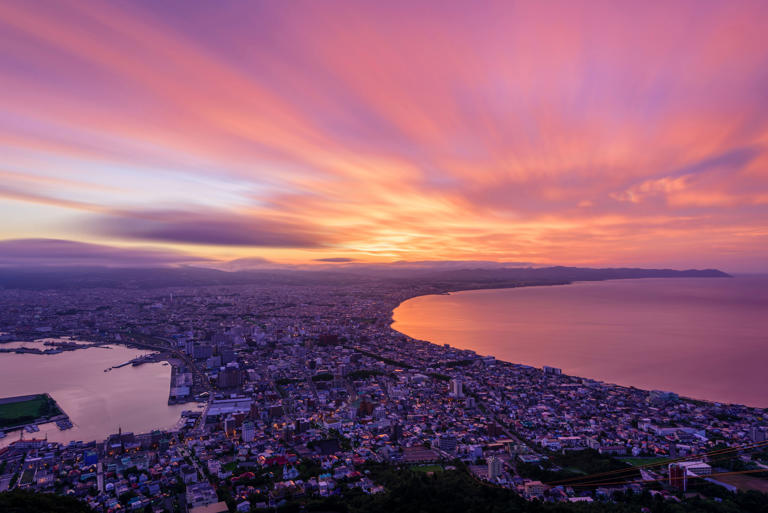
South Korea & Japan: Featuring the Osaka World Expo 2025
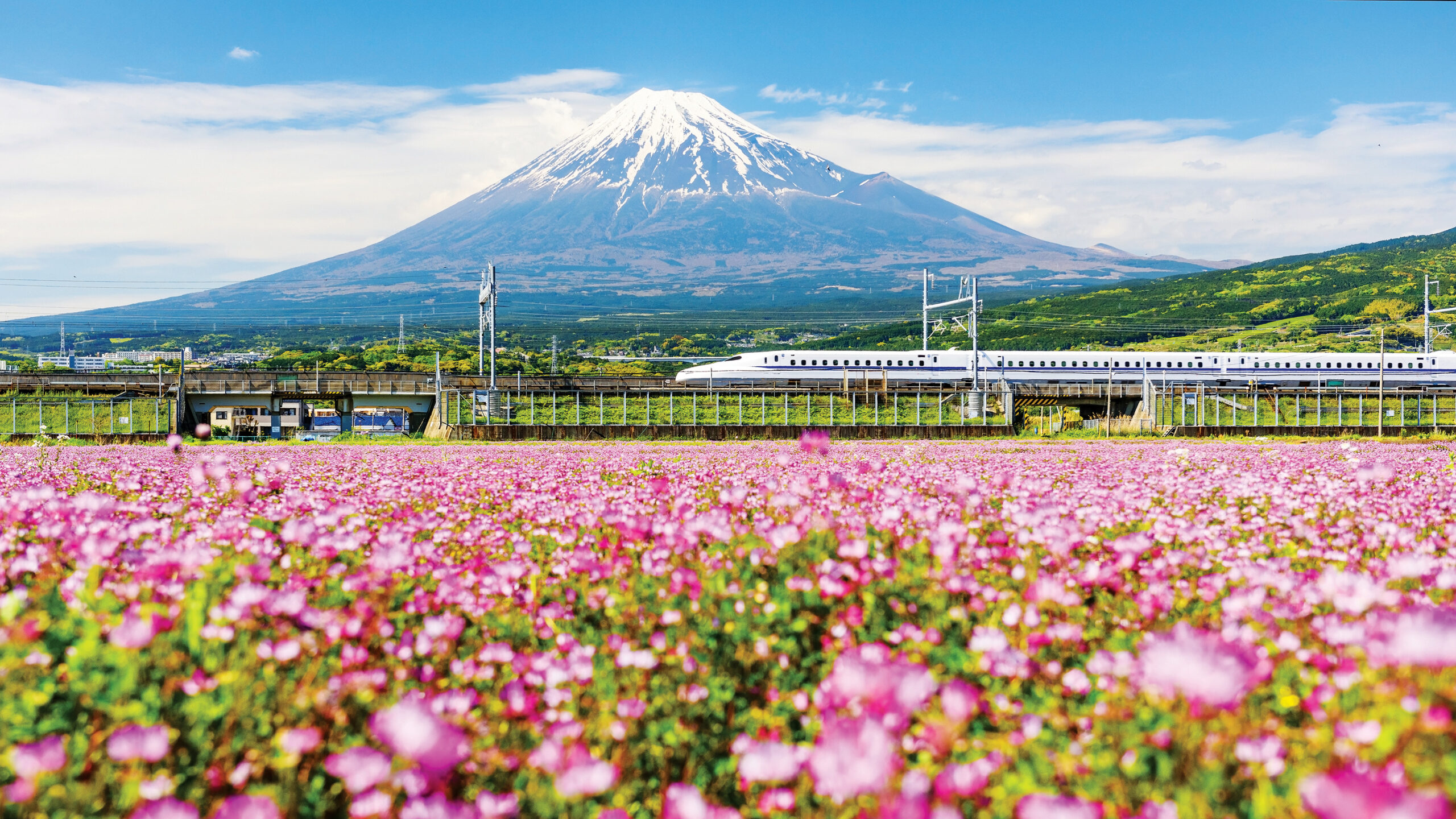
June 17 - July 3, 2025
From $8,495 per person based on double occupancy..
Experience the allure of South Korea and Japan on a first-class, 14-night adventure that features the highlights of Seoul, Busan, Kyoto and Tokyo! In Seoul, visit the magnificent Gyeongbokgung Palace, a traditional hanok village and the Hwaseong Fortress. Plus, see the Korean Demilitarized Zone. Thrill to a journey on a high-speed bullet train from Seoul to Busan. There, witness stunning views from the Oryukdo Skywalk, explore local markets and a culture village, and visit the Haedong Yonggungsa Temple and the UN Memorial Cemetery. Fly to Kyoto to see a Heian-period palace, ancient temples and shrines. Attend the Osaka World Expo 2025, featuring innovative exhibits and cultural experiences. In Tokyo, drive along the stylish Ginza district, visit Edo-Tokyo Museum, see the towering Tokyo Skytree and stroll the Imperial Palace’s Japanese gardens. Plus, immerse yourself in cultural traditions of a Japanese Tea Ceremony, Taiko drumming and Korean kimchi- and Japanese sweet-making. This small-group itinerary features a generous meal plan that includes wine with dinner, a dedicated Travel Director and enriching lectures. Flights from Busan to Osaka, and the train ride are included.
Call (615) 322-3673 or contact us to learn more and register.
THE PLAZA SEOUL, Autograph Collection
Park Hyatt Busan
Hotel Nikko Princess Kyoto
Imperial Hotel Tokyo
- 14 nights hotel accommodation.
- Transfers with baggage handling; flight from Busan to Osaka, for Kyoto, and train and deluxe motor coach transfers during the land program.
- 14 Breakfasts; 6 lunches; 5 dinners.
- Engaging excursions showcasing the local culture, heritage and history.
- Free trim to pursue your individual interests.
- A personal VOX headset to hear your English-speaking guide clearly.
- Tipping of guides and drivers.
- Request More Information
- Trip Brochure
Quick Links
- Upcoming Events
- Update My Information
- Find Alumni
Please view the main text area of the page by skipping the main menu.
The page may not be displayed properly if the JavaScript is deactivated on your browser.
- Entertainment
Tokyo-Hakata shinkansen trains to offer private rooms from FY 2026
April 29, 2024 (Mainichi Japan)

TOKYO (Kyodo) -- Shinkansen bullet trains linking Tokyo, Osaka and Hakata will start to offer special seats in dedicated rooms from fiscal 2026 as its operator seeks to satisfy growing demand for luxury and privacy on rail journeys.
Central Japan Railway Co. plans to install two private rooms per bullet train, equipped with reclining seats with foot rests. Passengers can have access to Wi-Fi, and adjust settings such as lighting, air-conditioning and audio based on their preference.
The new seats to be installed on some N700S trains will be designed to give an improved travel experience to customers, going a step further than the already more expensive "green car" seats currently available.
The operator is considering offering the new service between Tokyo and Hakata, a ward in the city of Fukuoka in the southwestern prefecture of the same name. Around 10 percent of the roughly 130 shinkansen trains could be installed with private rooms, each available for one or two passengers.
"We will make sure necessary hardware is in place to cater to the diversifying needs of our customers," JR Central President Shunsuke Niwa told a recent press conference in Tokyo.
Tokaido shinkansen trains used to have private rooms but they were abolished to increase the number of seats in 2003 when the 100-series cars went out of service.
Shinkansen bullet trains are among the popular forms of public transport in Japan. The country is pinning hopes on inbound tourism to help drive economic growth, after the tourism sector was pounded by the COVID-19 pandemic.
Related Articles
- Japan railway to revive private compartments on bullet trains with beyond-1st class service
- 'Moving suites' sightseeing train unveiled in southwest Japan
- In Photos: Gorgeous sightseeing train dubbed 'moving suites' unveiled in southwest Japan
Also in The Mainichi
Latest articles.

More Articles
- Go to Page Top

IMAGES
VIDEO
COMMENTS
Tickets cost ¥12000 - ¥17000 and the journey takes 2h 29m. Alternatively, JR Bus Kanto operates a bus from Tokyo Station Yaesu South Exit to Ōsaka Station JR Express Bus Terminal 4 times a day. Tickets cost ¥4200 - ¥8000 and the journey takes 8h 33m. Four other operators also service this route.
The Tokyo-Osaka Hokuriku Arch Pass is a rail pass that allows holders to travel between Tokyo and Osaka via Kanazawa, using the Hokuriku Shinkansen. It is not the fastest way to travel between Tokyo and Osaka, but it allows pass holders to visit the less-explored Hokuriku Region along the way. It costs 24,500 yen and is valid for seven ...
Taking the Shinkansen (bullet train) from Tokyo to Osaka. From US$91.64 *. 2 hours and 22 minutes (fastest service) Buy a one-way ticket on Klook or Rakuten Travel Experiences, or a JR Pass in advance. The journey from Tokyo to Osaka on the bullet train takes 2.5 to 3 hours .
The Tokaido line is served by several types of trains, so the price of a ticket depends on what train and travel class are you going to travel by, how far in advance do you buy your ticket, and so on (you can read more about the Japanese train tickets here). On average, a high-speed Tokyo to Osaka train costs about 165 USD.
For those with an inclination for air travel, you can fly into Osaka from Tokyo. Flights from Haneda Airport to Osaka International Airport are available via carriers such as All Nippon Airways (ANA), Japan Airlines (JAL), or Star Flyer. Fares start from around 10,000 yen, with the flight duration approximately one to one and a half hours.
The Takeaway. The shinkansen (bullet train) is easily the best way to travel between Tokyo and Osaka. It takes around 2 hours and 30 minutes and costs Y13,620 between Tokyo and Osaka (non-reserved seat). You don't need to reserve seats on the shinkansen if you travel outside of peak travel hours and outside of peak travel seasons.
From Tokyo to Osaka. Tokyo and Osaka―each with their own international airport―are large cities that serve as a base for sightseeing in Japan. There are also many visitors who like to include both cities in their sightseeing itinerary. Tokyo and Osaka are about 500 kilometers apart from each other.There are many ways to travel from one city to the other including shinkansen, airplane ...
The good news is that Osaka is just a short trip away! From Shinkansen bullet and regular trains, highway buses, domestic flights, and car rentals, discover your favorite way to travel from Tokyo to Osaka in style! 1. Shinkansen Bullet Train. Riding the Shinkansen is a sight-seeing experience all on its own!
Tickets cost $75-110 and the journey takes 2h 31m. Japan Railways Limited Express also services this route twice daily. Alternatively, JR Bus Kanto operates a bus from Ōsaka Station JR Express Bus Terminal to Tokyo Station Nihonbashi Exit 4 times a day. Tickets cost $27-55 and the journey takes 8h 31m. Four other operators also service ...
All Tokyo to Osaka Shinkansen bullet trains running between the cities boast several travel classes, fast travel times (Tokyo to Osaka train time is about 2.5 hours), and an extensive and convenient schedule with up to 32 daily departures. As Tokyo to Osaka train is among the most popular routes, it would be wise to book your train tickets in ...
Day 6: Kyoto: Travel to Kyoto and Explore Southern Higashiyama and Downtown. 9am: Travel from Osaka to Kyoto. If necessary, either drop your luggage at your hotel or put it in the lockers or luggage storage office at Kyoto Station. 10am: Visit Kiyomizu-dera Temple. 11am: Walk down Sannen-zaka and Ninen-zaka.
There are 5 airlines that fly nonstop from Tokyo to Osaka. They are: ANA, Japan Airlines, Jetstar Japan, Peach and Skymark Airlines. The cheapest price of all airlines flying this route was found with Jetstar Japan at $43 for a one-way flight. On average, the best prices for this route can be found at Peach.
Taking the Shinkansen from Osaka to Tokyo. From US$91.64 *. 2 hours and 22 minutes (fastest service) Buy a one-way ticket on Klook or Rakuten Travel Experiences, or a JR Pass in advance. The Shinkansen, or bullet train, is definitely the fastest and most convenient way of getting from Osaka to Tokyo, and it's well worth experiencing a ride on ...
Tokyo to Kyoto and Osaka by Shinkansen bullet train. Tokyo, Kyoto, and Osaka are connected by the Tokaido Shinkansen line, included with the Japan Rail Pass. This line is one of the most heavily travelled high-speed rail route in the world. It spans 515 km (320 miles), and offers the fastest and smoothest way for travelling between Tokyo ...
The travel between Tokyo and Osaka, a one-way ticket costs around 14,500 yen on a Nozomi train or 13,500 yen on a Hikari train. It is possible to get a discount ticket on a Kodama train if you book at least one day in advance. In comparison, a 7-day JR Pass costs around 28,500 yen, the same price as two one-way tickets from Osaka to Tokyo.
There are 4 airlines that fly nonstop from Tokyo to Osaka Kansai Intl Airport. They are: ANA, Japan Airlines, Jetstar Japan and Peach. The cheapest price of all airlines flying this route was found with Jetstar Japan at $42 for a one-way flight. On average, the best prices for this route can be found at Peach.
Compare flight deals to Osaka from Tokyo from over 1,000 providers. Then choose the cheapest plane tickets or fastest journeys. Flex your dates to find the best Tokyo-Osaka ticket prices. If you're flexible when it comes to your travel dates, use Skyscanner's "Whole month" tool to find the cheapest month, and even day to fly to Osaka from Tokyo.
Japan Railways Shinkansen operates a train from Tōkyō Station to Shin-Ōsaka Station every 20 minutes. Tickets cost ¥12000 - ¥17000 and the journey takes 2h 29m. Alternatively, Kintetsu Bus operates a bus from Shinjuku Expressway Bus Terminal to Ōsaka Station once daily. Tickets cost ¥6500 - ¥10000 and the journey takes 4h 59m.
From Kyoto【 JR Line 】 JR Kyoto - JR Osaka station: 560 yen / 30 min. *If you already have a JR pass, there is no extra charge. From Tokyo【 Shinkansen 】 JR Tokyo station - JR Shin Osaka station: 14,450 yen / less than 3 hour. *If you already have a JR pass, there is no extra charge.
Which airlines provide the cheapest flights from Tokyo Haneda to Osaka Kansai Intl? In the last 72 hours, the cheapest one-way ticket from Tokyo Haneda to Osaka Kansai Intl found on KAYAK was with Star Flyer for $58. Star Flyer proposed a round-trip connection from $114 and ANA from $135.
[WILLER Official] This is the list of popular routes of WILLER TRAVEL highway buses / night buses from Tokyo to Osaka . The routes, operating companies, sales period, and prices are listed. You can narrow down by 3-row seat, charging OK, Wi-Fi, etc. Booking up to 3 months in advance is available! You can choose a night bus or highway bus which meets your demand at a great deal.
Train to Tokyo Haneda, fly to Osaka Itami • 4h 36m. Take the train from Narita Airport Terminal 2·3 Station to Shinagawa. Fly from Tokyo Haneda (HND) to Osaka Itami (ITM) HND - ITM. ¥13304 - ¥40726.
Bullet train. The Shinkansen train between Osaka and Kyoto is cheap and lightning fast. This trip is included in many Japanese rail passes, but if you're paying for a standalone ticket, you'll pay 1420 yen (about US$10). The trip takes 15 minutes, so slower local trains hardly seem worth the mildly cheaper price.
Tokyo also has a more diverse culinary scene than Osaka. However, Osaka beats Tokyo in street food and local Izakaya culture. Another striking difference between them is tonality and dialect. Japanese living in Osaka, Kyoto, Nara and Kobe tend to use the 'Kansai-ben' dialect.
Wednesday 1 May 2024. Adapted from James Clavell's eponymous 1975 novel, FX's limited series ' Shogun ' on Disney+ throws viewers into the complex and turbulent world of Japan's Sengoku or ...
There are 4 airlines that fly nonstop from Osaka Kansai Intl Airport to Tokyo. They are: ANA, Japan Airlines, Jetstar Japan and Peach. The cheapest price of all airlines flying this route was found with Jetstar Japan at $37 for a one-way flight. On average, the best prices for this route can be found at Peach.
Japan Express: Osaka to Tokyo (9 Days) Multi-Day Tour. Valid for Departures: 01 May 2024 - 01 Jan 2027. Osaka, Japan to Tokyo, Japan. G Adventures Inc. From the Buddhist monks of Koyasan to the high rollers of Tokyo, see the many faces of Japan on this condensed tour beginning in Osaka. Savour the region's culinary delicacies and the ...
Occasionally, the street food of Osaka might make it to the list. Few consider venturing beyond the big cities of Tokyo and Kyoto, but for those who dare try, thrilling adventures await in Japan's ...
June 17 - July 3, 2025 From $8,495 Per Person Based on Double Occupancy. Experience the allure of South Korea and Japan on a first-class, 14-night adventure that features the highlights of Seoul, Busan, Kyoto and Tokyo! In Seoul, visit the magnificent Gyeongbokgung Palace, a traditional hanok village and the Hwaseong Fortress. Plus, see the […]
TOKYO (Kyodo) -- Shinkansen bullet trains linking Tokyo, Osaka and Hakata will start to offer special seats in dedicated rooms from fiscal 2026 as its operator seeks to satisfy growing demand for ...